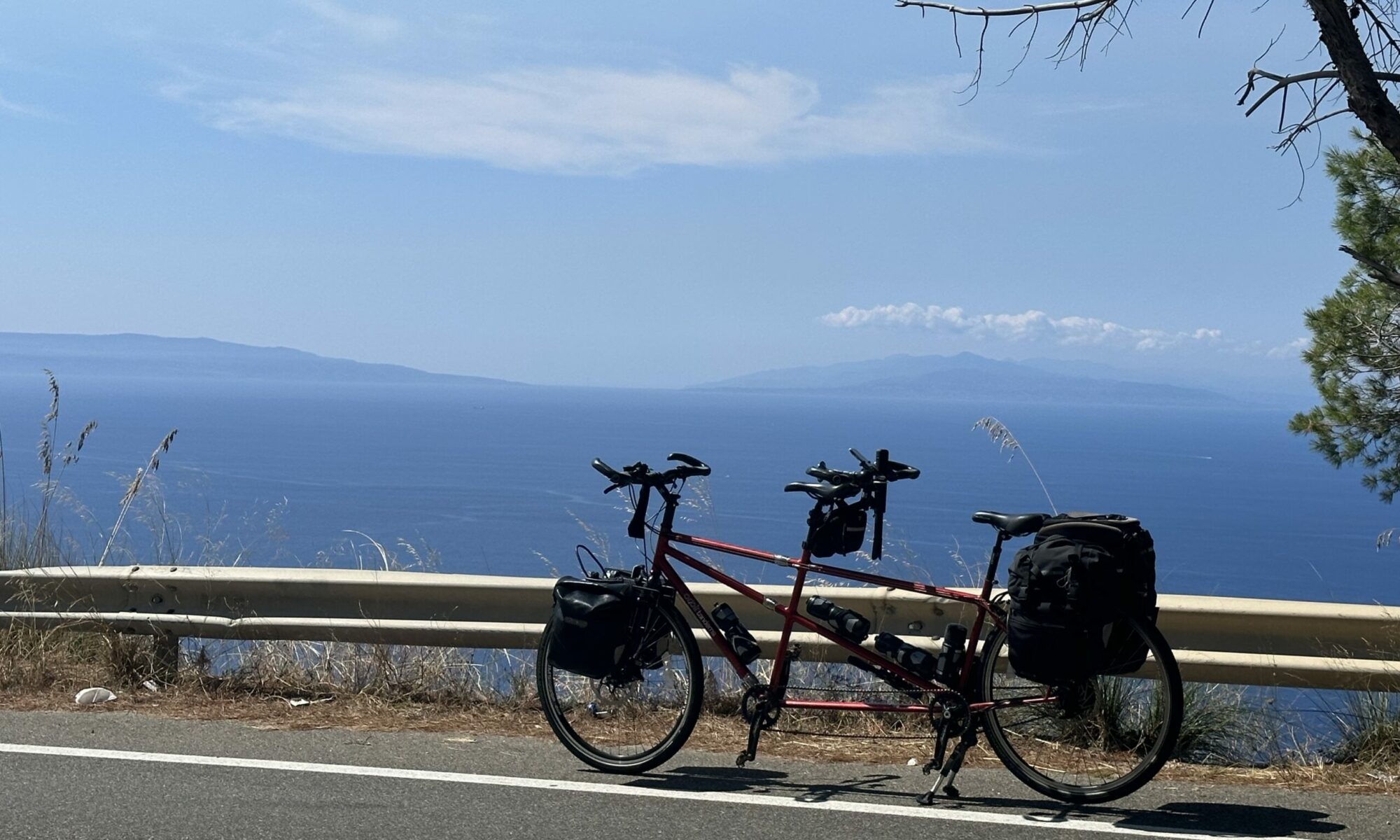Our flight from Singapore took only an hour and a half. Technically we were flying in almost exactly the wrong direction for our overall journey, but we very much wanted to spend some time in Penang. We arrived in the late afternoon, after a descent over sea and wooded islands. Pretty soon we had reacquired our luggage, withdrawn some Ringgits from a cash machine and booked a taxi from a desk at the airport. I realised when we were standing outside the airport waiting for the taxi that the rather grumpy woman at the taxi desk had “held on to” 5 ringgits from our change. Now that’s only a quid, admittedly, but on principle (and because she was grumpy) I went back and retrieved it from her. Not a look of shame crossed her face.
That, though, turned out to be an unreliable predictor of our time in Penang, which turned out to be a joyous, friendly place. Our taxi whisked us along the main highway, built on reclaimed land, past the two bridges which connect Penang to the Malaysian mainland and into Georgetown. He pulled up outside Jawi Peranakan Mansion, our hotel for the next few days, a stunningly beautiful building in the Peranakan style. Peranakan is the Malay name for the original Straits-born Chinese, the descendants of Chinese immigrants who settled in this area.
The hotel was run by a proud and efficient, ever-smiling team. It featured a long dining table used for communal breakfasts, designed to encourage conversation between the guests. Well they hadn’t reckoned with the inherent reserve of the British, then! After a couple of days we thawed and engaged in friendly conversation over the delicious breakfast. I (Jonathan) particularly enjoyed the local breakfast option of Dal with Paratha – wonderful.
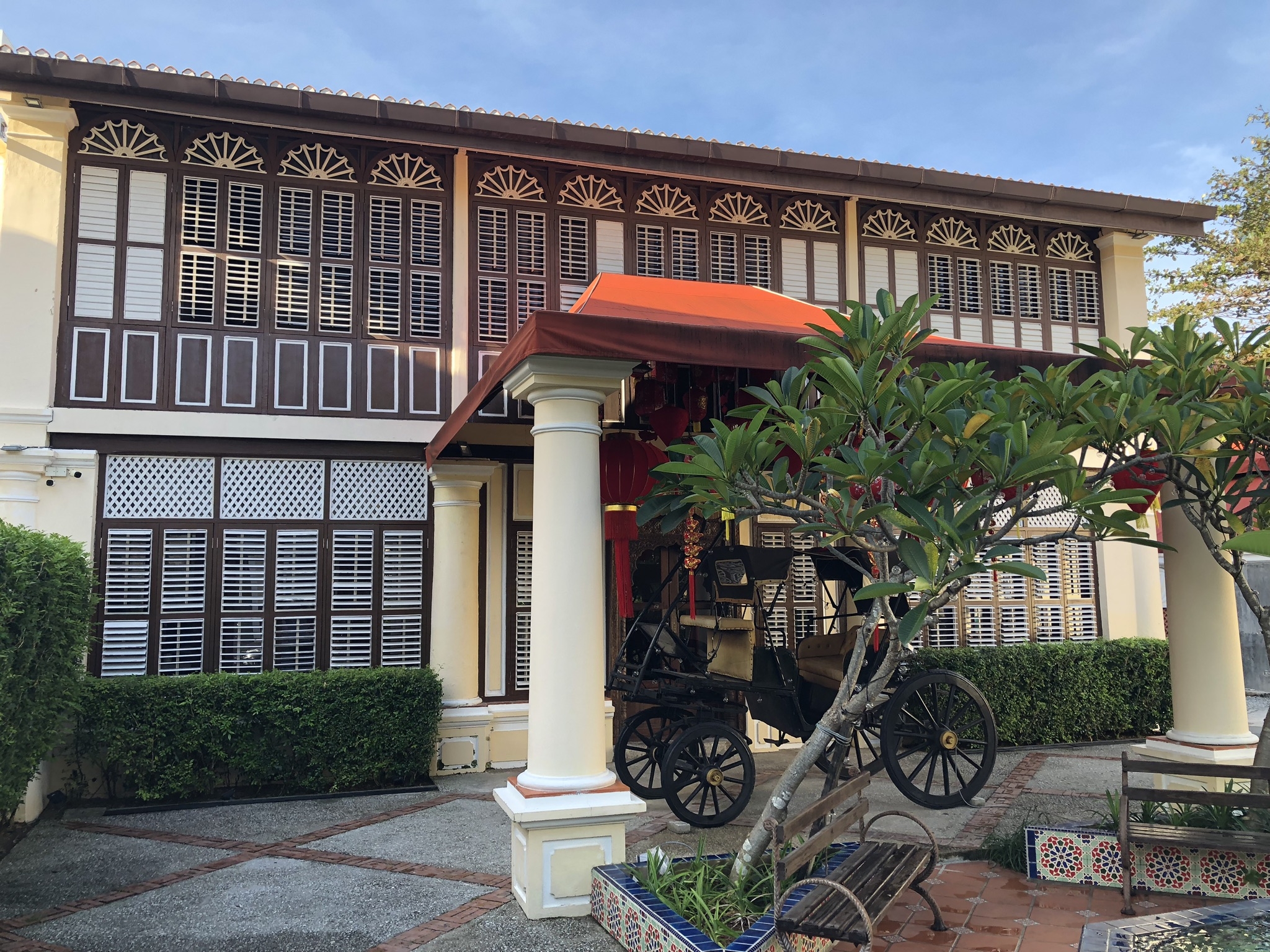
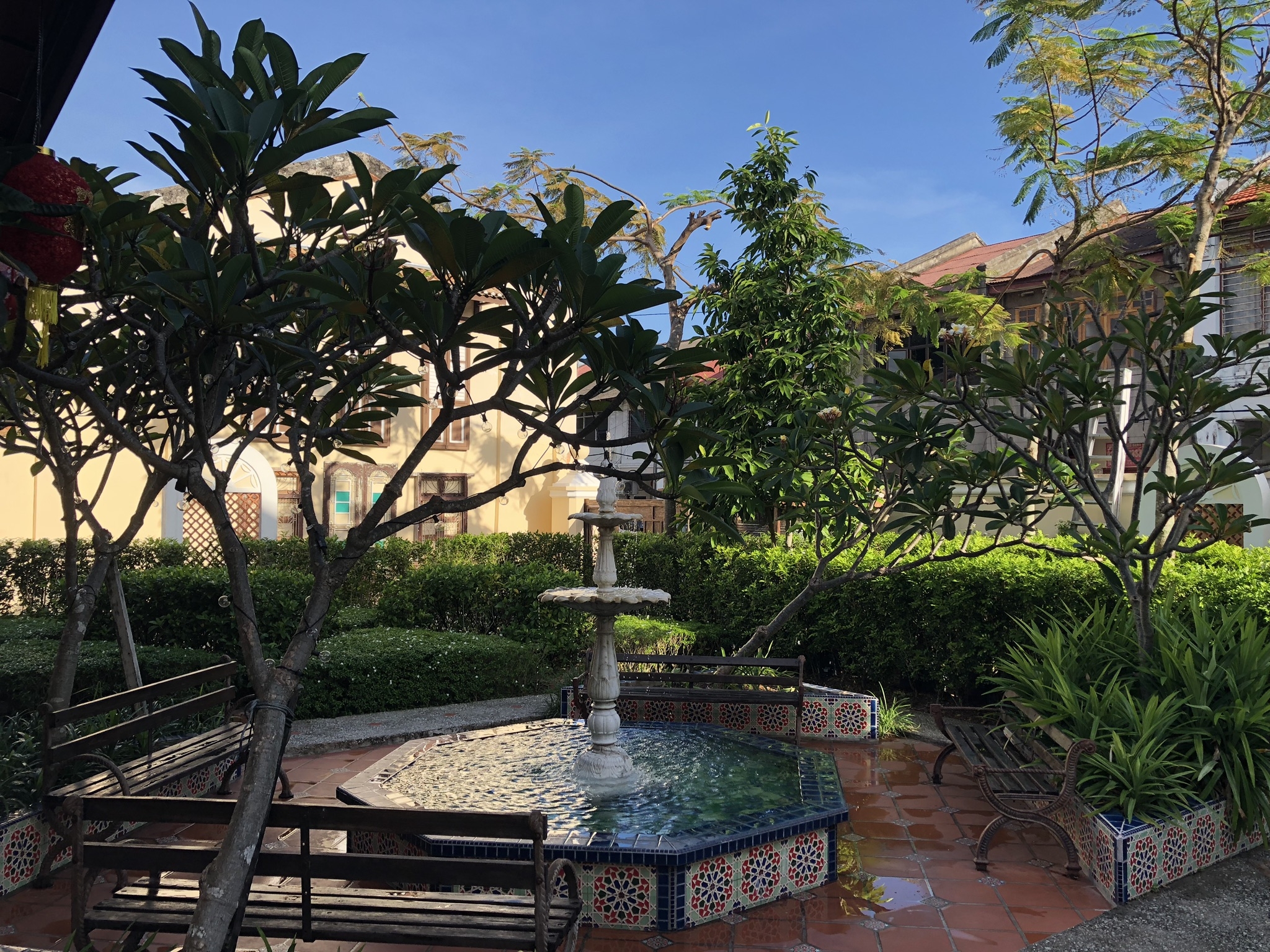
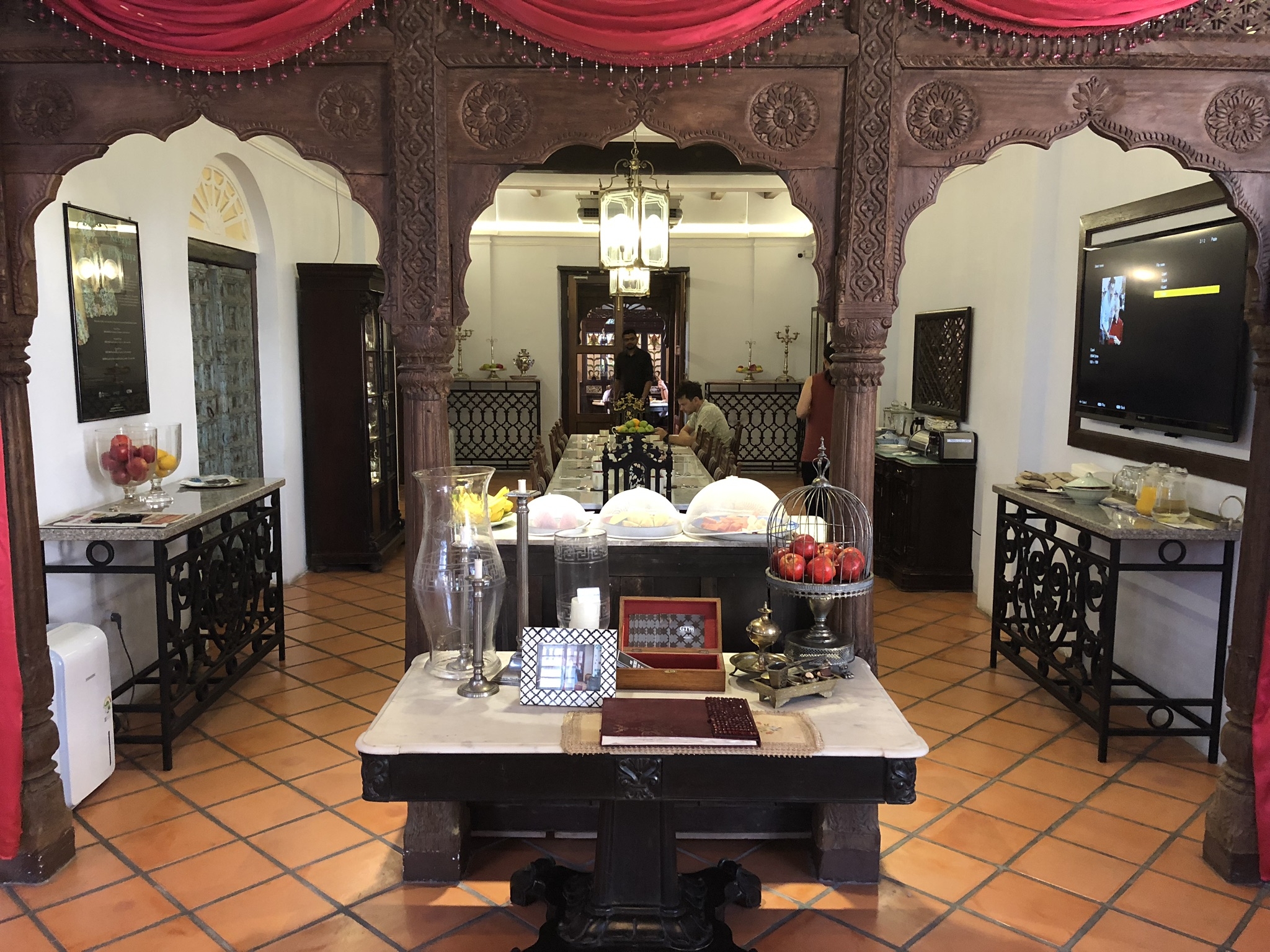
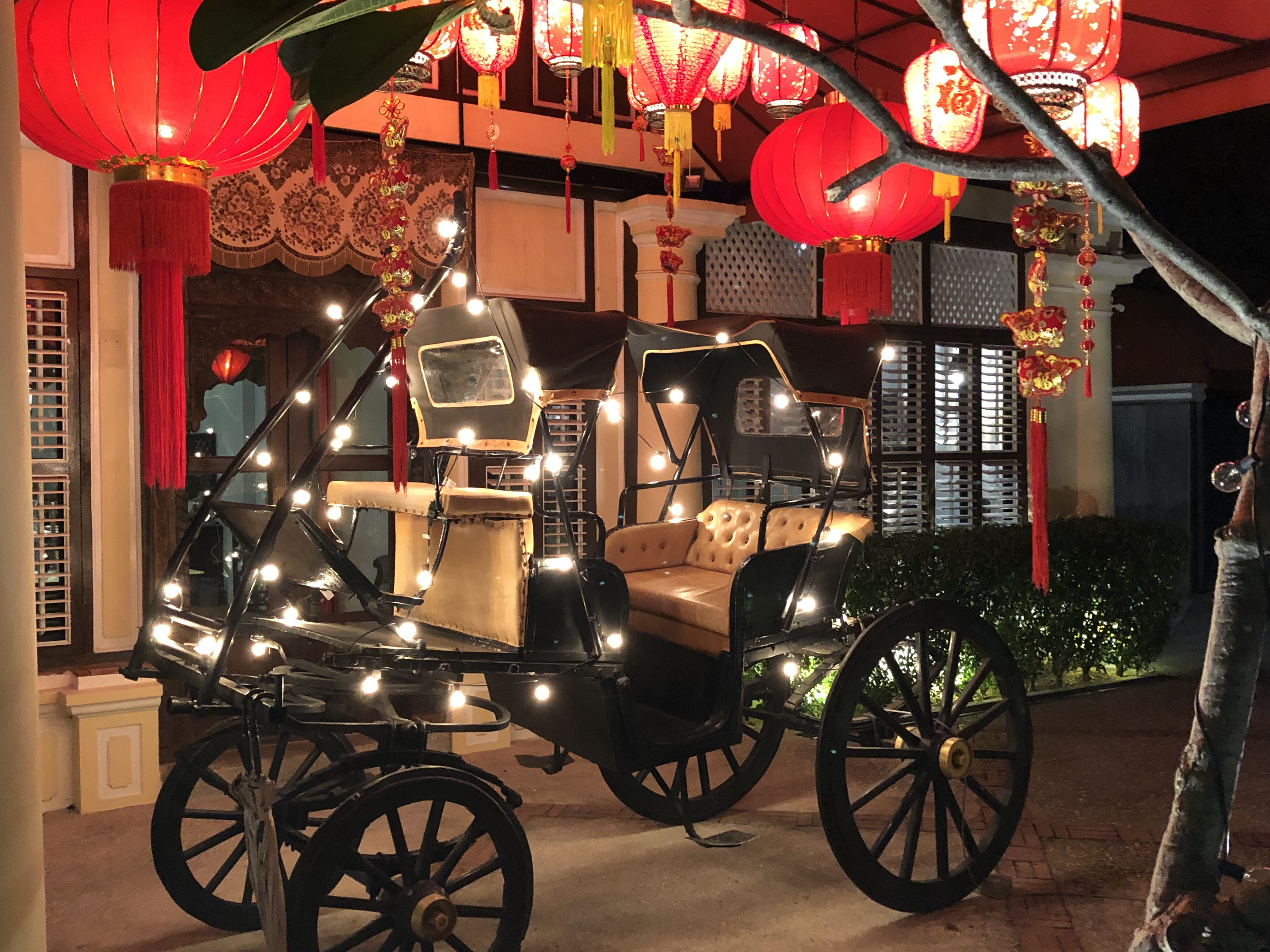
In the early morning we were often woken up (temporarily!) by the call to prayer from the local mosque. While neither of us follows any religion, we’ve both found this an atmospheric feature of visits to other cities, particularly Istanbul, where the conflicting calls of the Sultanahmet (“Blue”) mosque and the Haghia Sophia were particularly memorable.
More prosaic, perhaps, but equally entertaining were the calls of the Asian Koel outside our window. This bird heralds the New Year in this part of the world, and features a distinctive call – a long series of cries increasing in pitch and volume. I’m afraid we dubbed it the Orgasm bird, feel free to reach your own judgement.
While the humidity had diminished from the highs of Singapore the temperature certainly had not, and we had to pace ourselves over the four days we spent here, particularly as the best way to move around was generally on foot. We tended to spend the mornings and early afternoons sightseeing, before returning to the hotel for a swim and a rest.
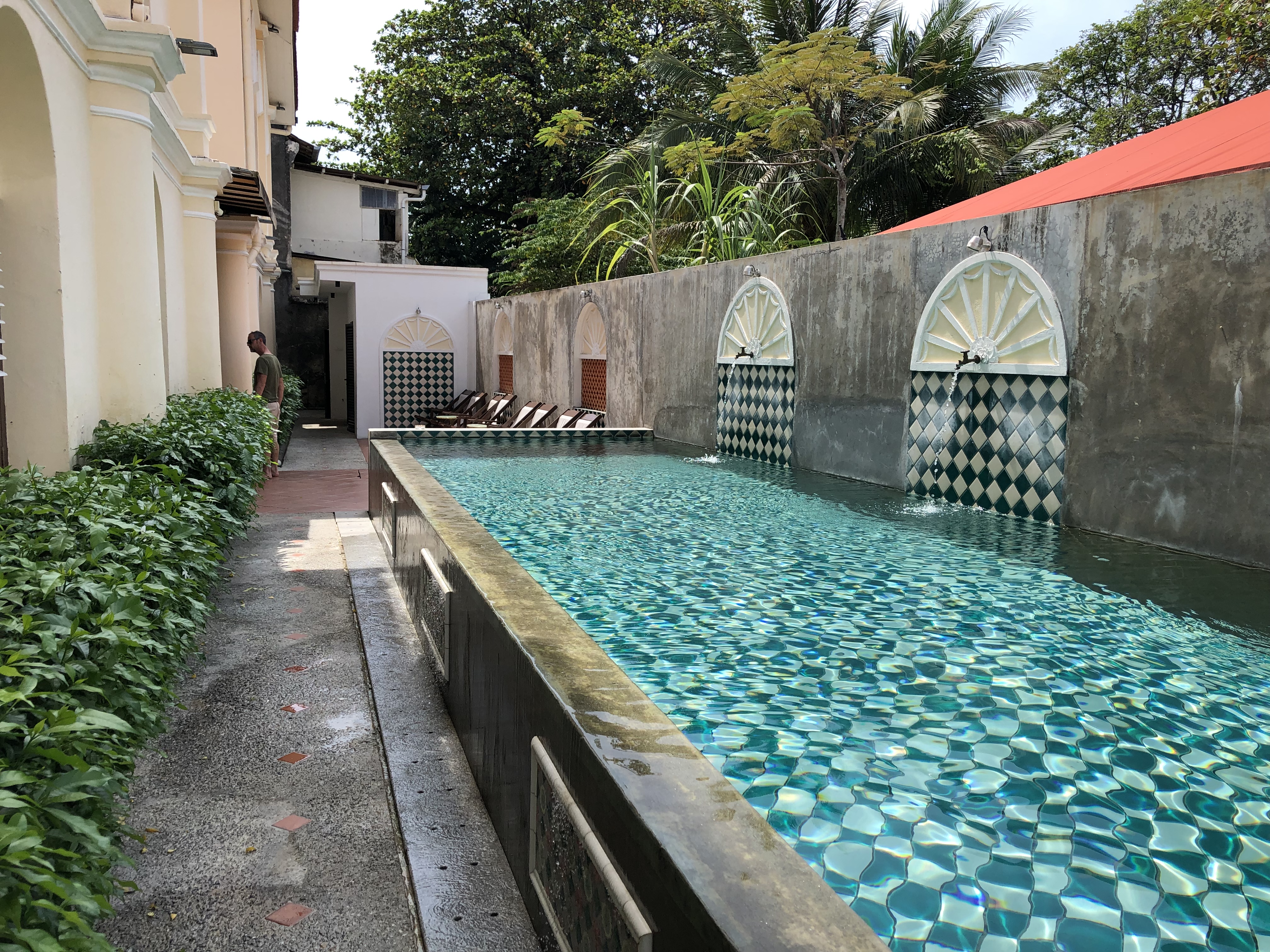
In terms of architecture Penang seems to be something of a patchwork. Much of the centre of Georgetown is an UNESCO World Heritage Site – this came about when UNESCO became concerned that the traditional wooden Peranakan mansions and associated buildings were being destroyed to make way for modern constructions. This has now ceased, and although many of the original buildings are in need of some repair some of them have been restored painstakingly. On our first day we visited the Penang Peranakan Mansion, a fine example of the genre, with intricately carved wooden screens and panels in every room, and an open courtyard in the centre of the house.
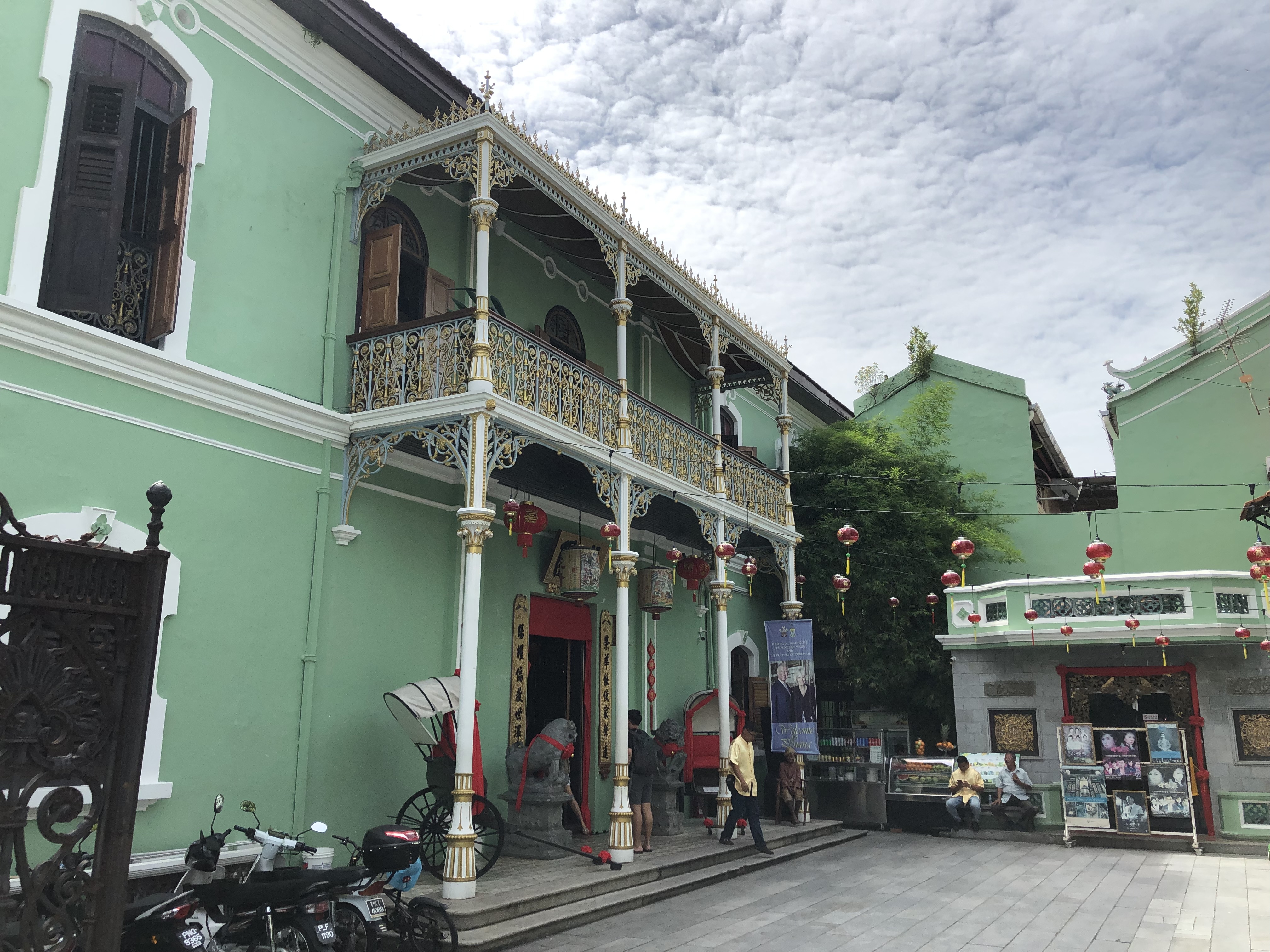
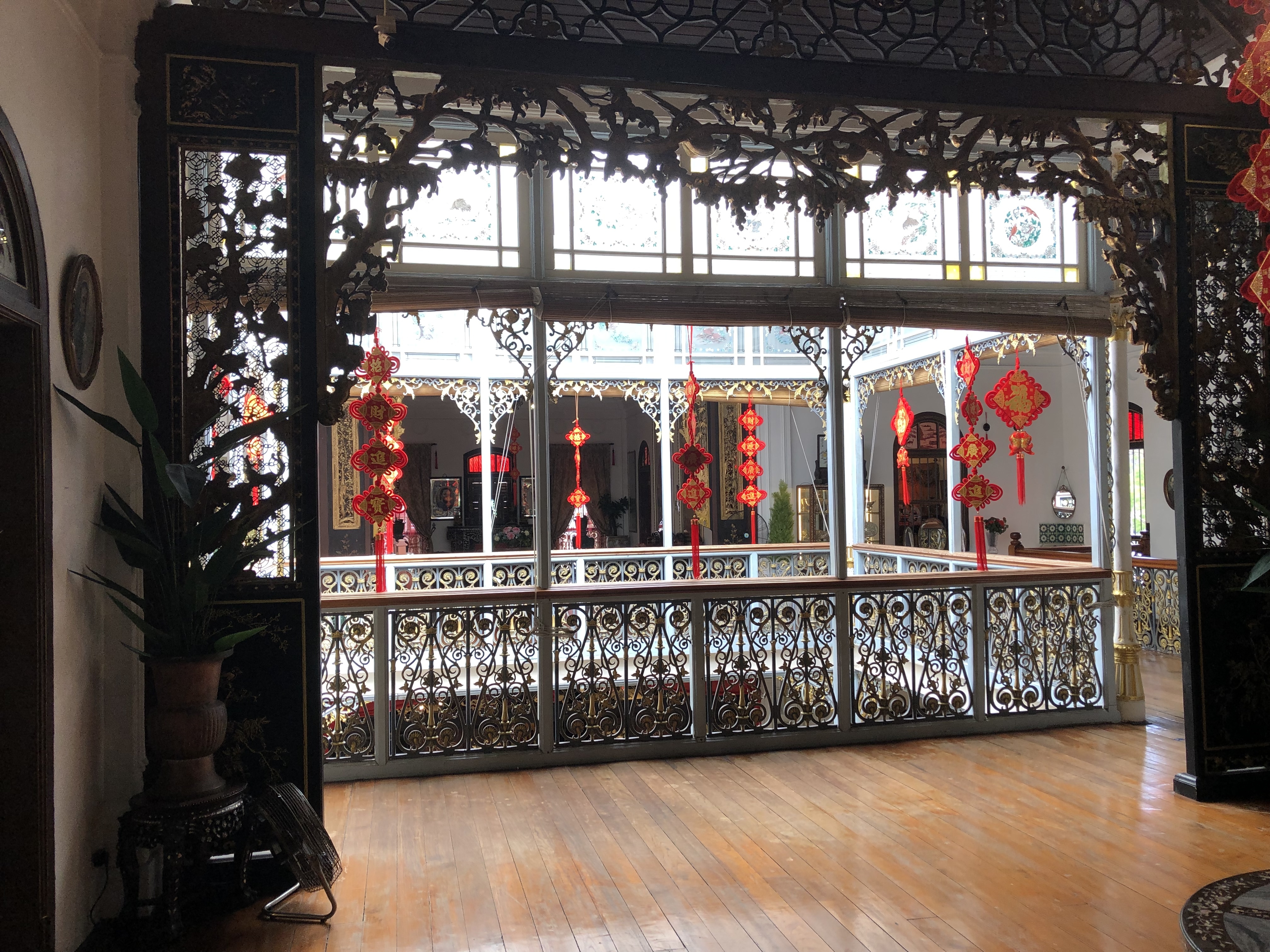
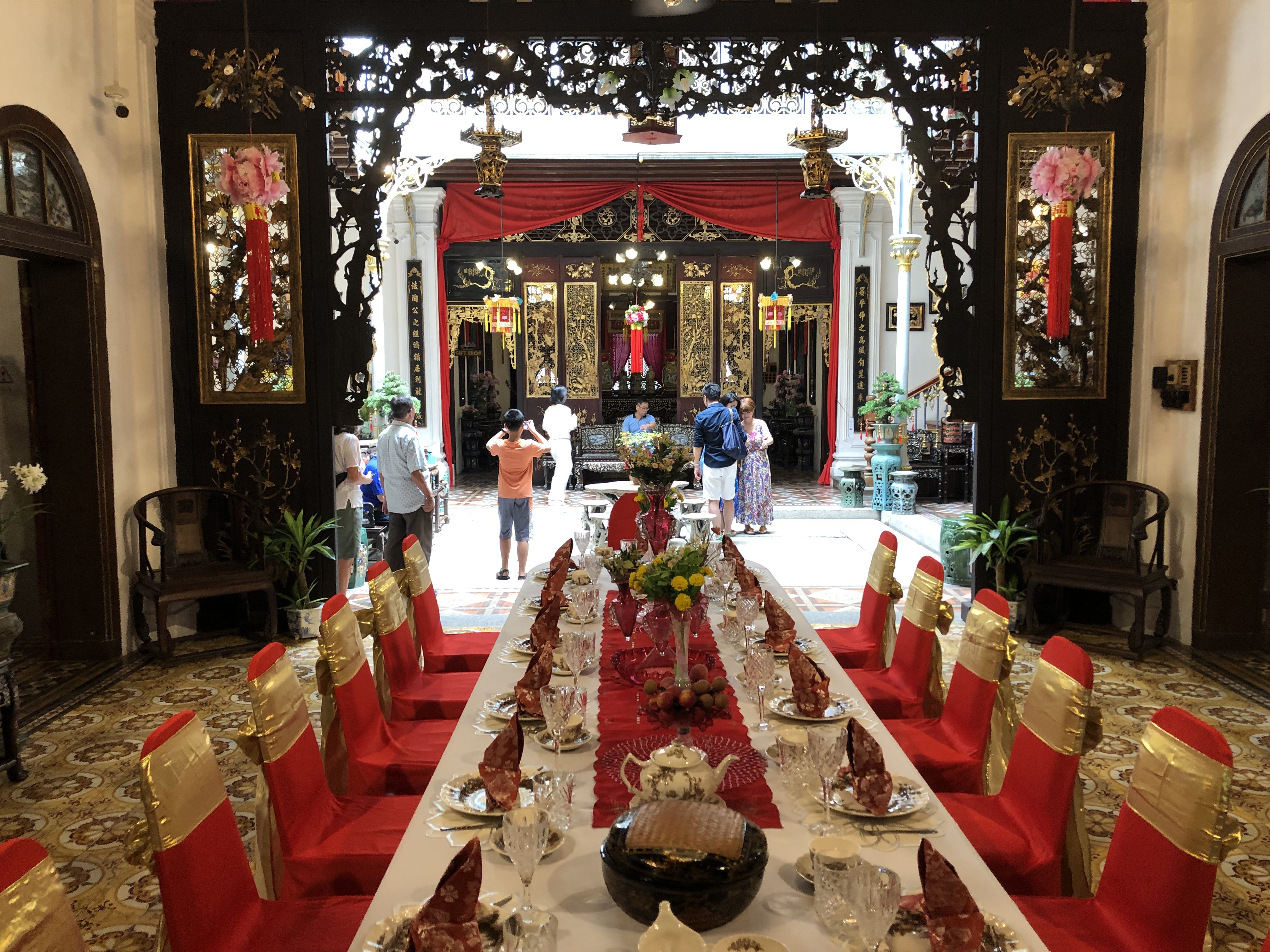
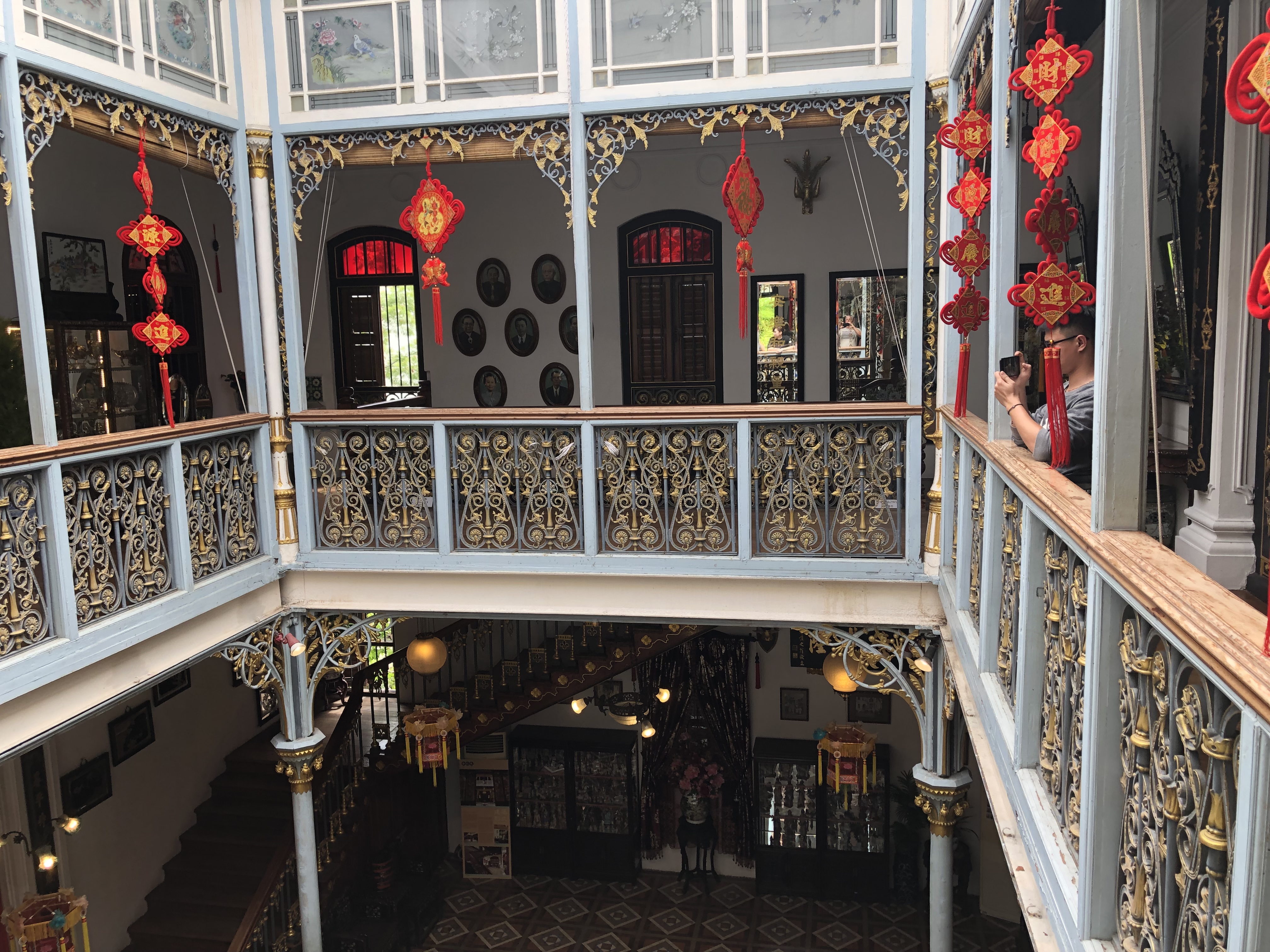
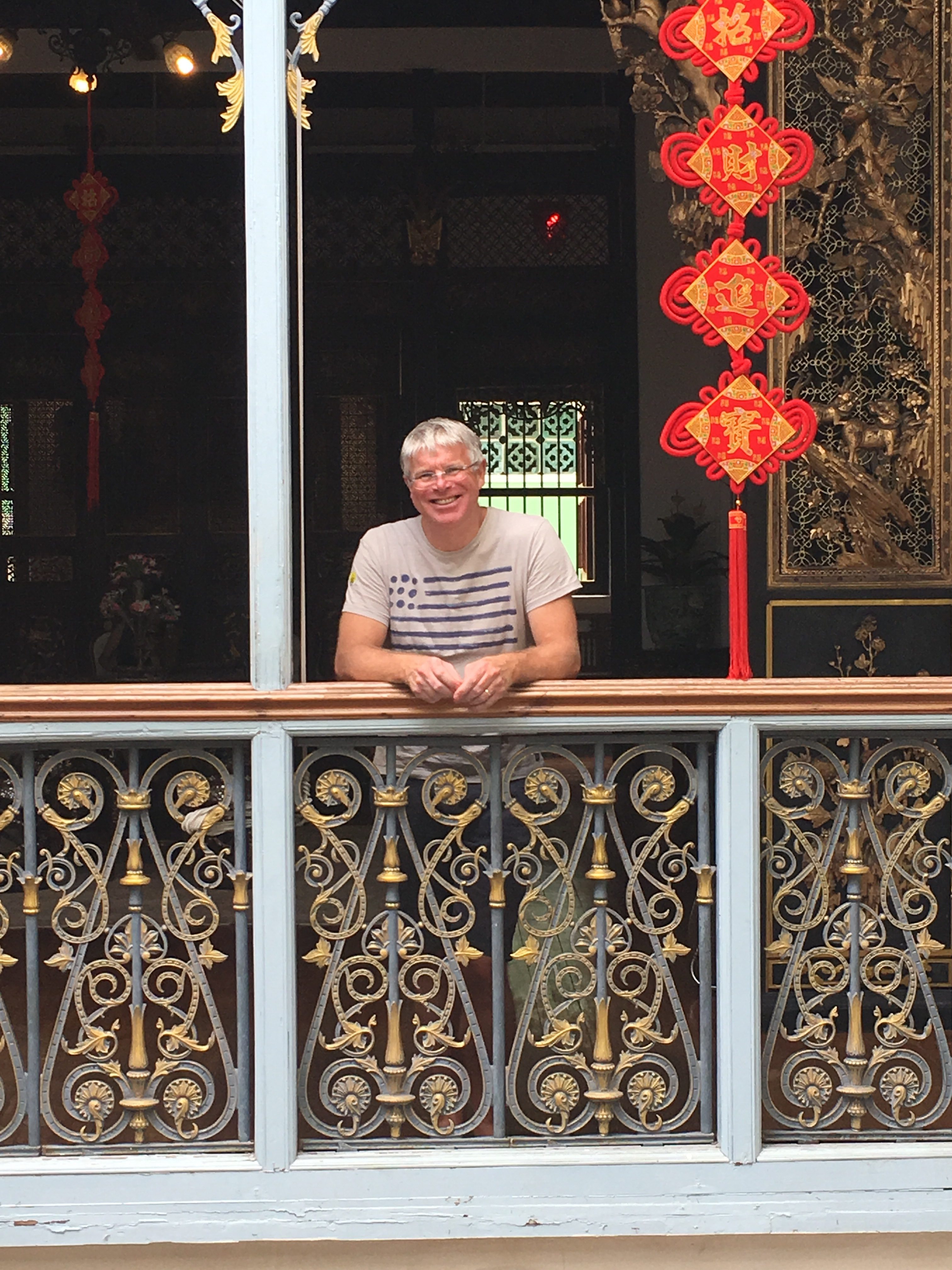
Penang is renowned for the vibrancy of its street food culture, and we soon learned why. Hawker markets, scattered throughout the city, provide an inexpensive way to sample high quality food not only from Malaysia but from all over the world. The procedure is simple: wander around and examine the options available from each stall (Frog Porridge, anybody?!) then find a numbered table, and order some Tiger beer. Then you go to each stall featuring the food you have chosen and order it, giving them your table number, and paying them when the food arrives. This is a good way of eating as much or little as you like from the wide array of stalls serving Malaysian, Chinese, Japanese, Thai, Vietnamese and Indonesian food. The quality was very high, as these markets feed locals as well as tourists, and a typical meal would cost us about twenty-five to thirty pounds, including beer.
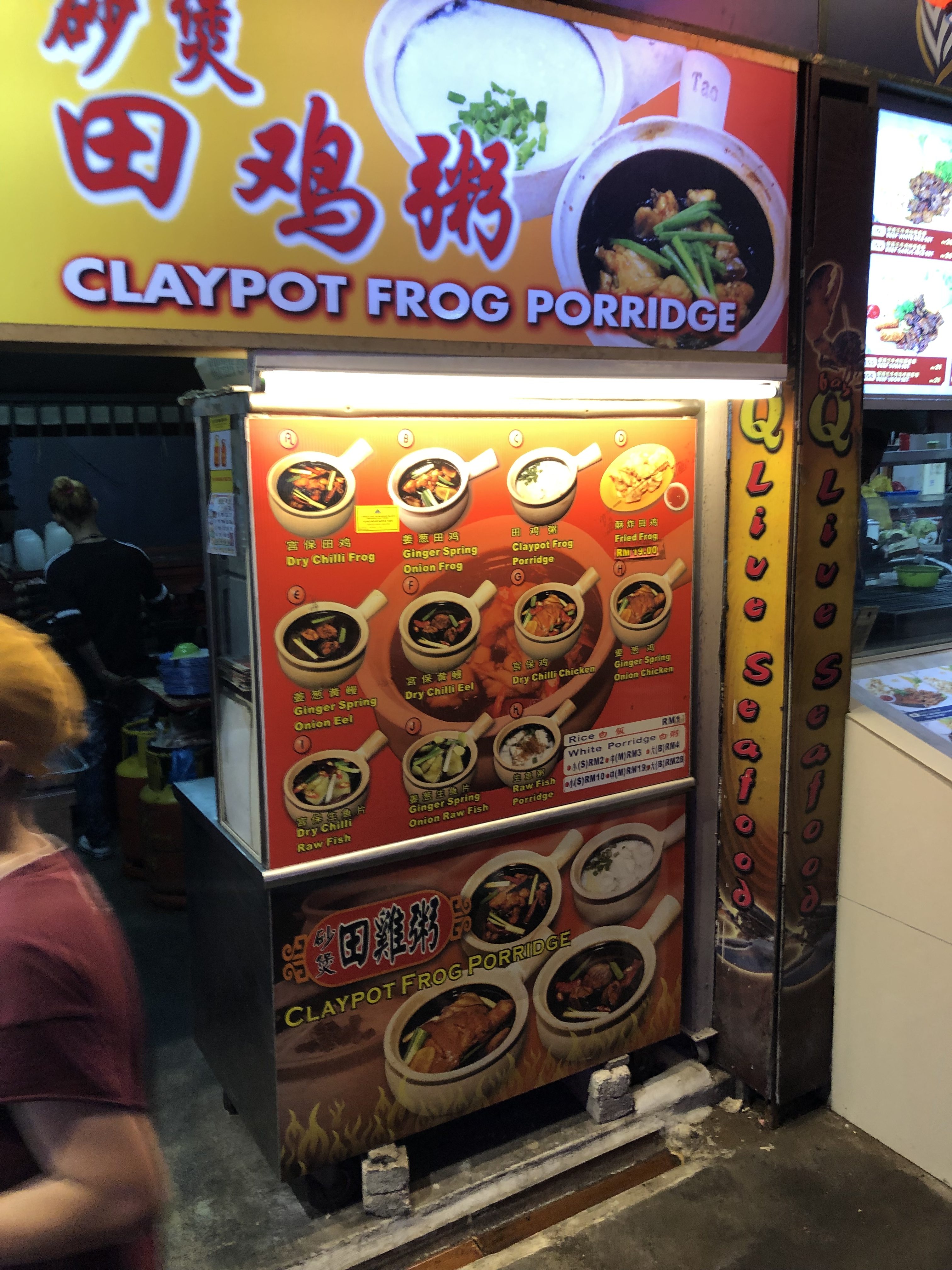
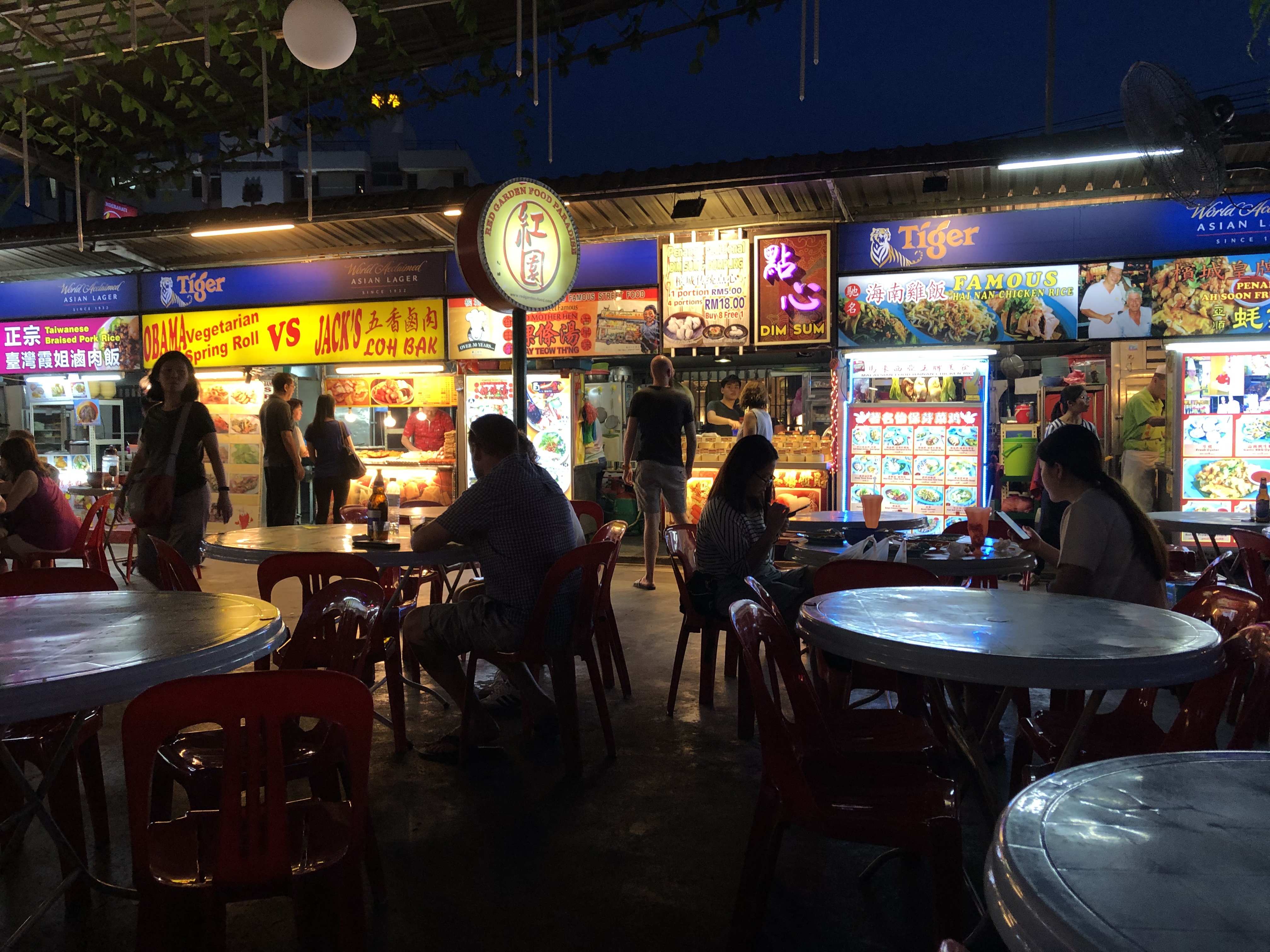
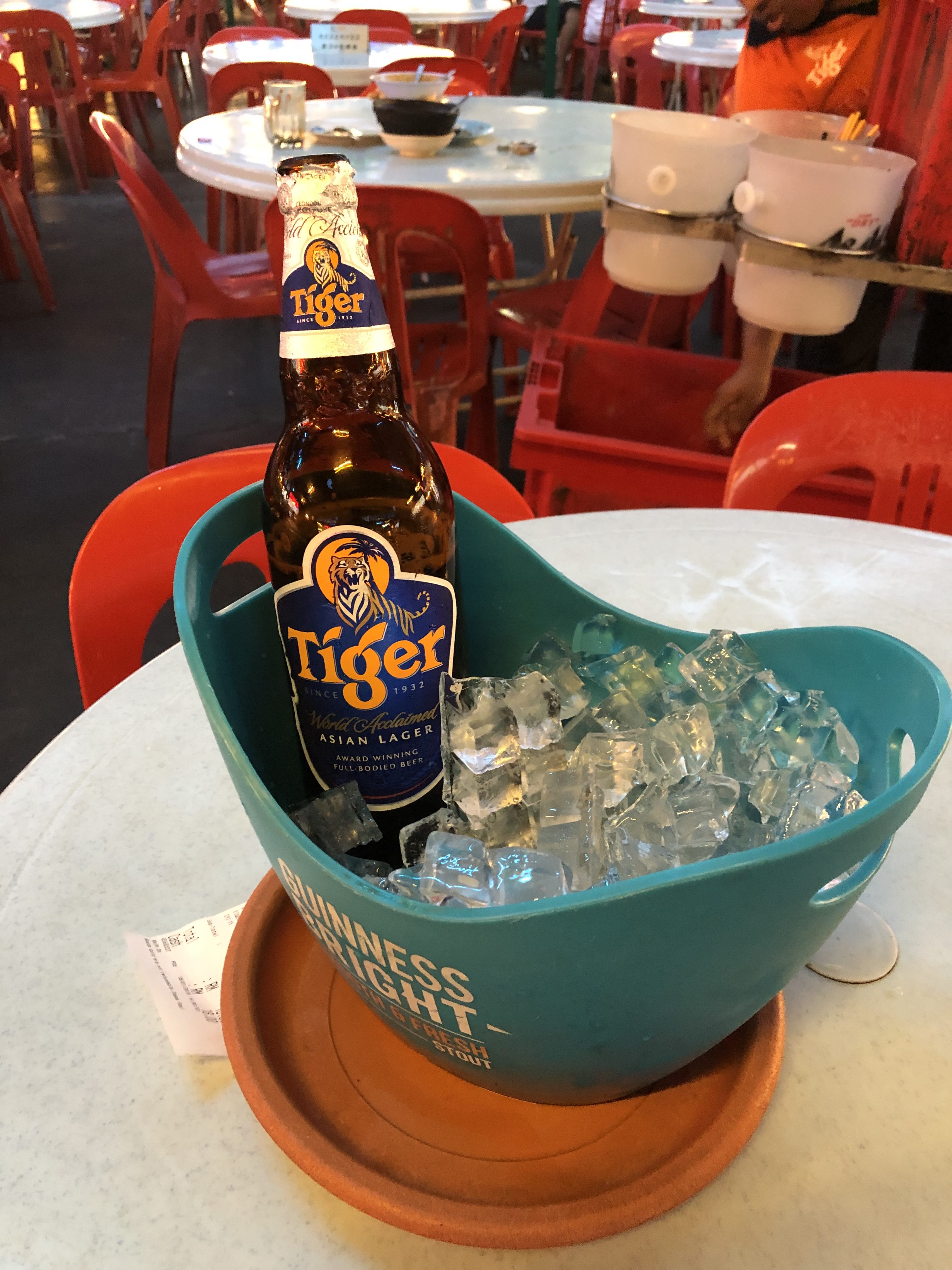
On our second day, after walking through the waterfront area which featured the colonial buildings from the time of British rule, we visited Fort Cornwallis, the original British fort set up by Sir Francis Light on behalf of Britain and the East India Company in 1771.
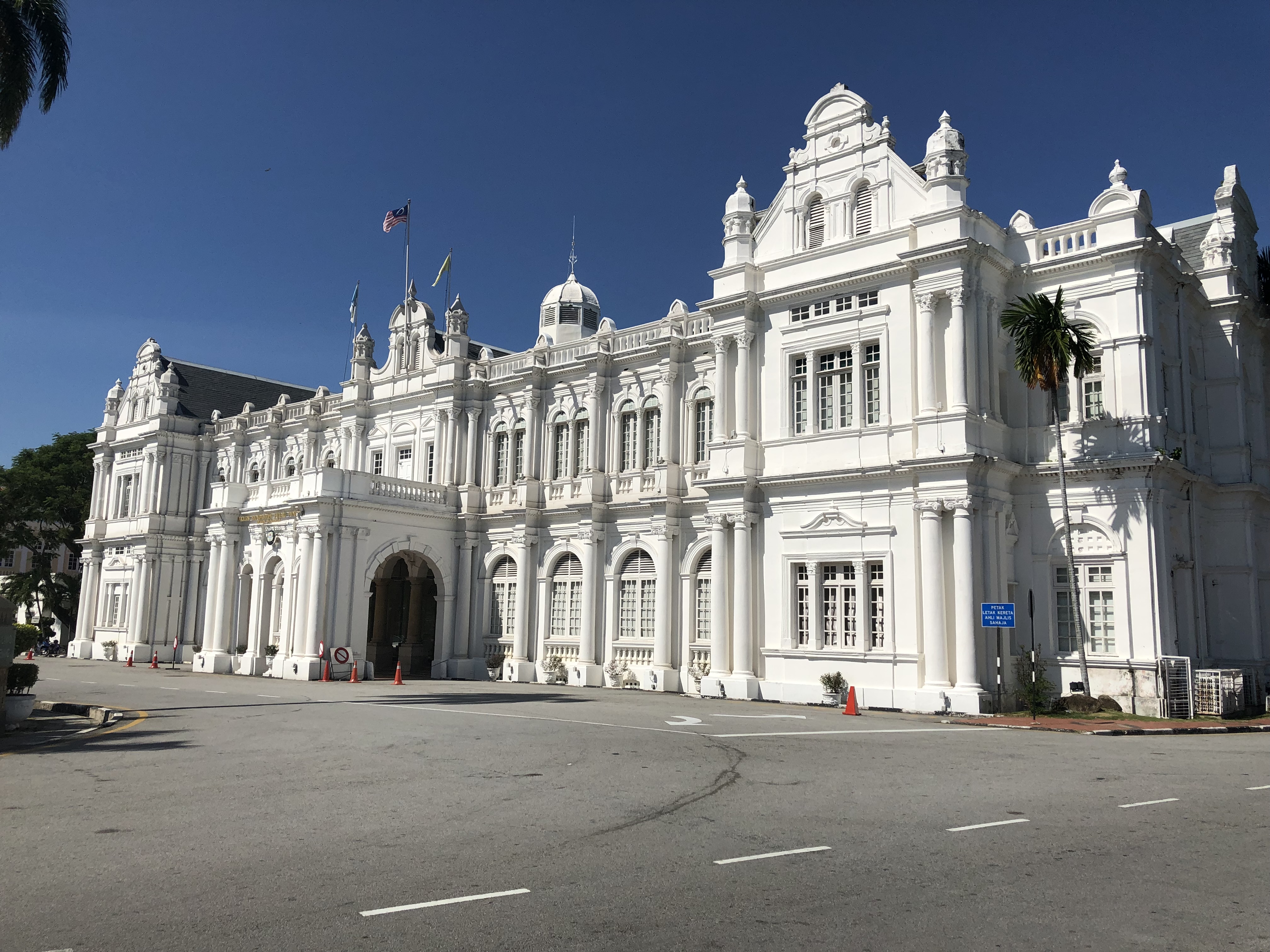
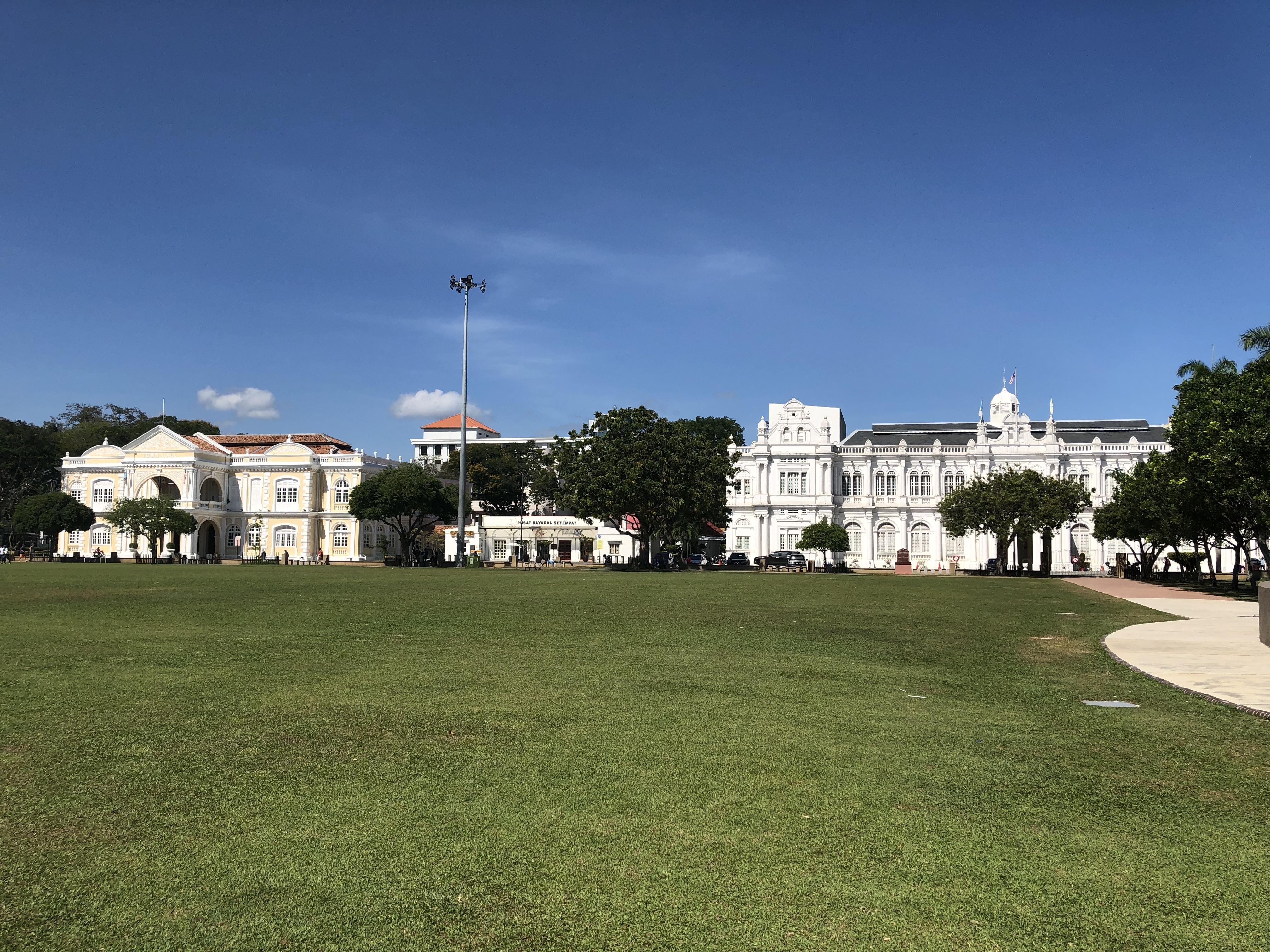
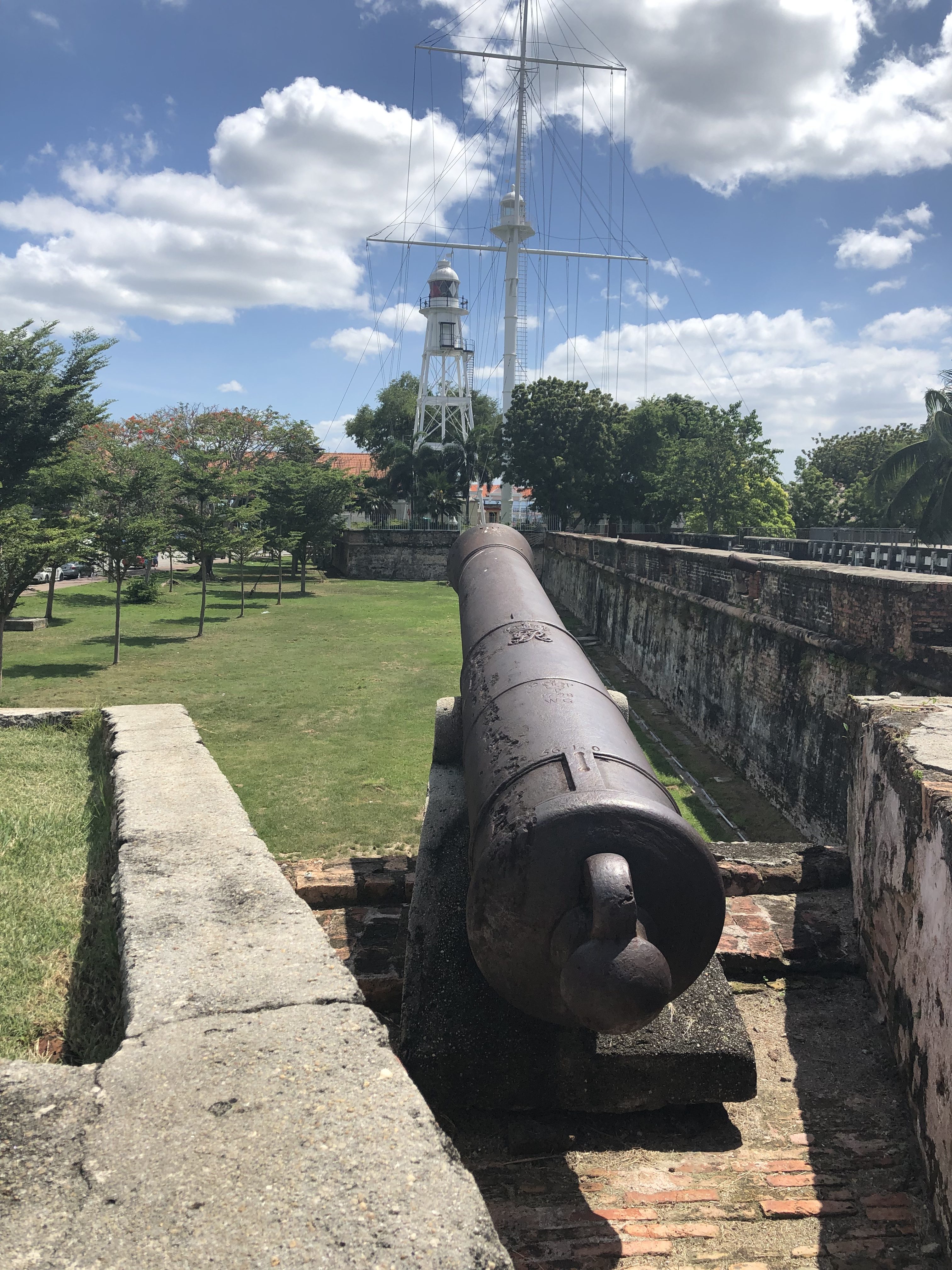
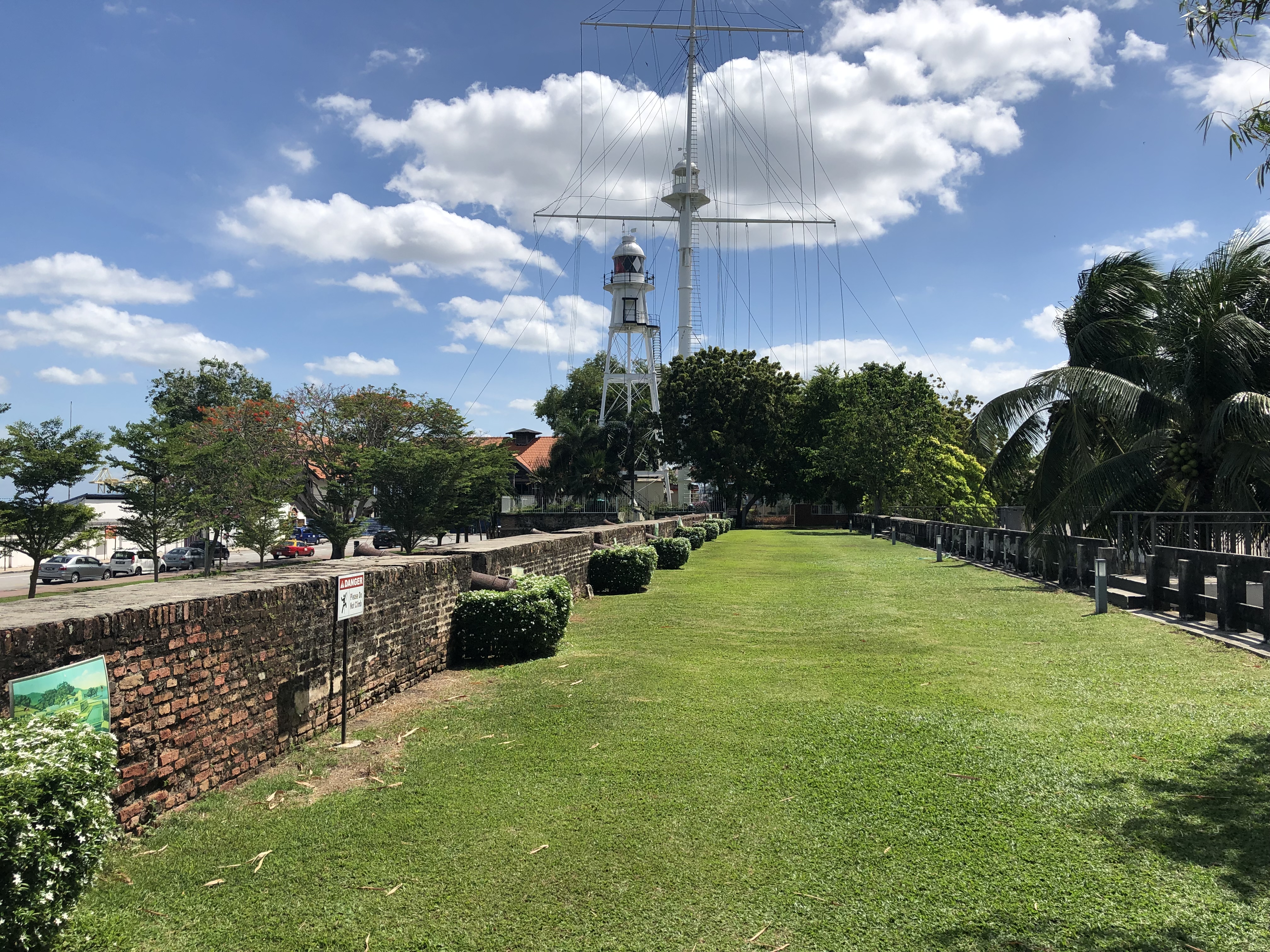
The low-rise fort was originally surrounded by a moat, until the occupants realised that the still water of the moat was a breeding ground for mosquitoes, and therefore one of the reasons for the increased incidence of malaria. Mosquitoes continue to be a problem today, although Malaria is not, and we used large quantities of Deet on any bare skin before venturing out for the evening.
On Sunday we ventured further afield, travelling by taxi to the base station of the Penang Hill funicular. The modern funicular took us up the hill in only five minutes, and when we reached the top we had a superb view over Georgetown and the Malacca Straits. Although the view was hazy on arrival, later on it cleared to allow some better photography.
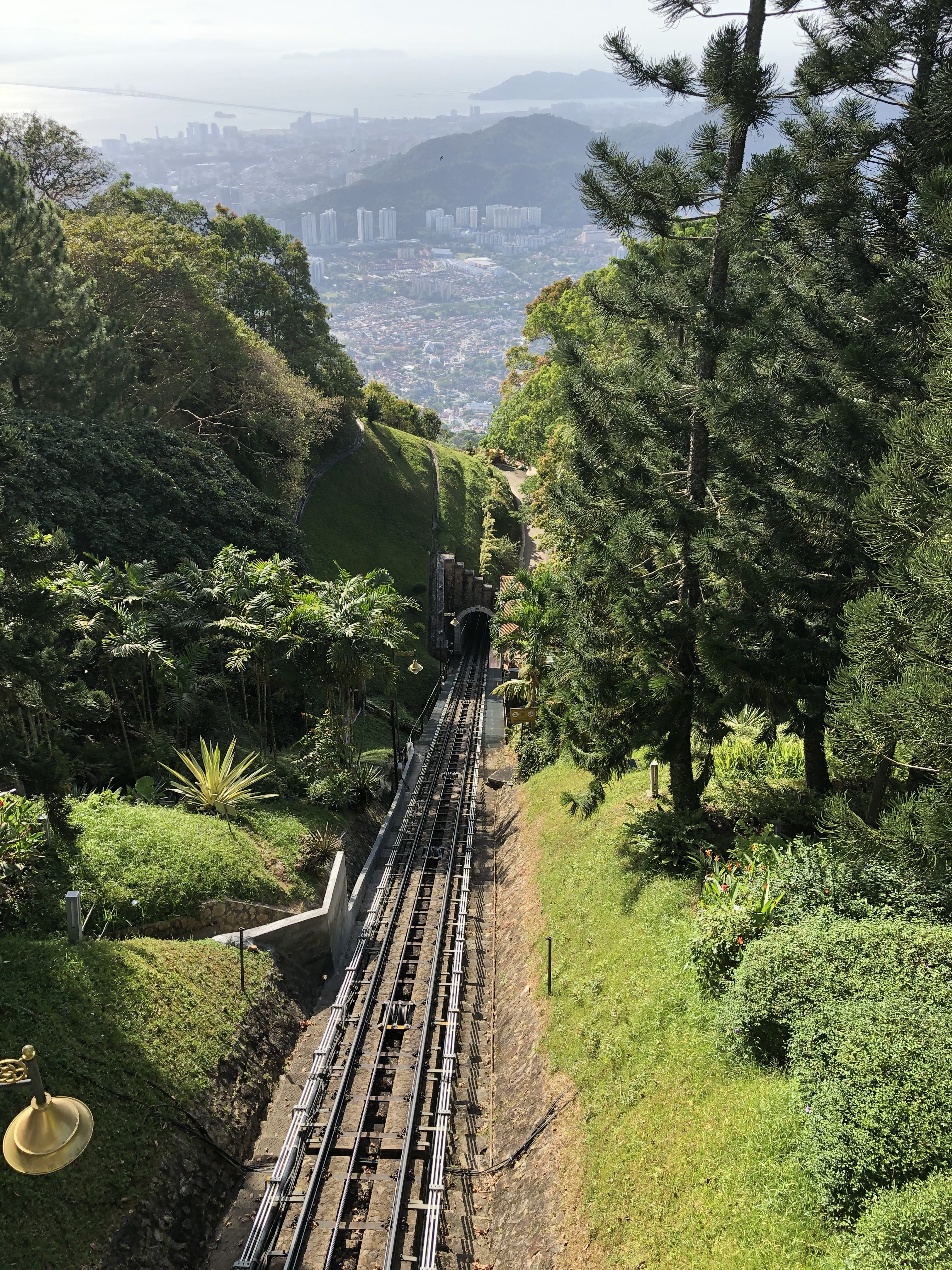
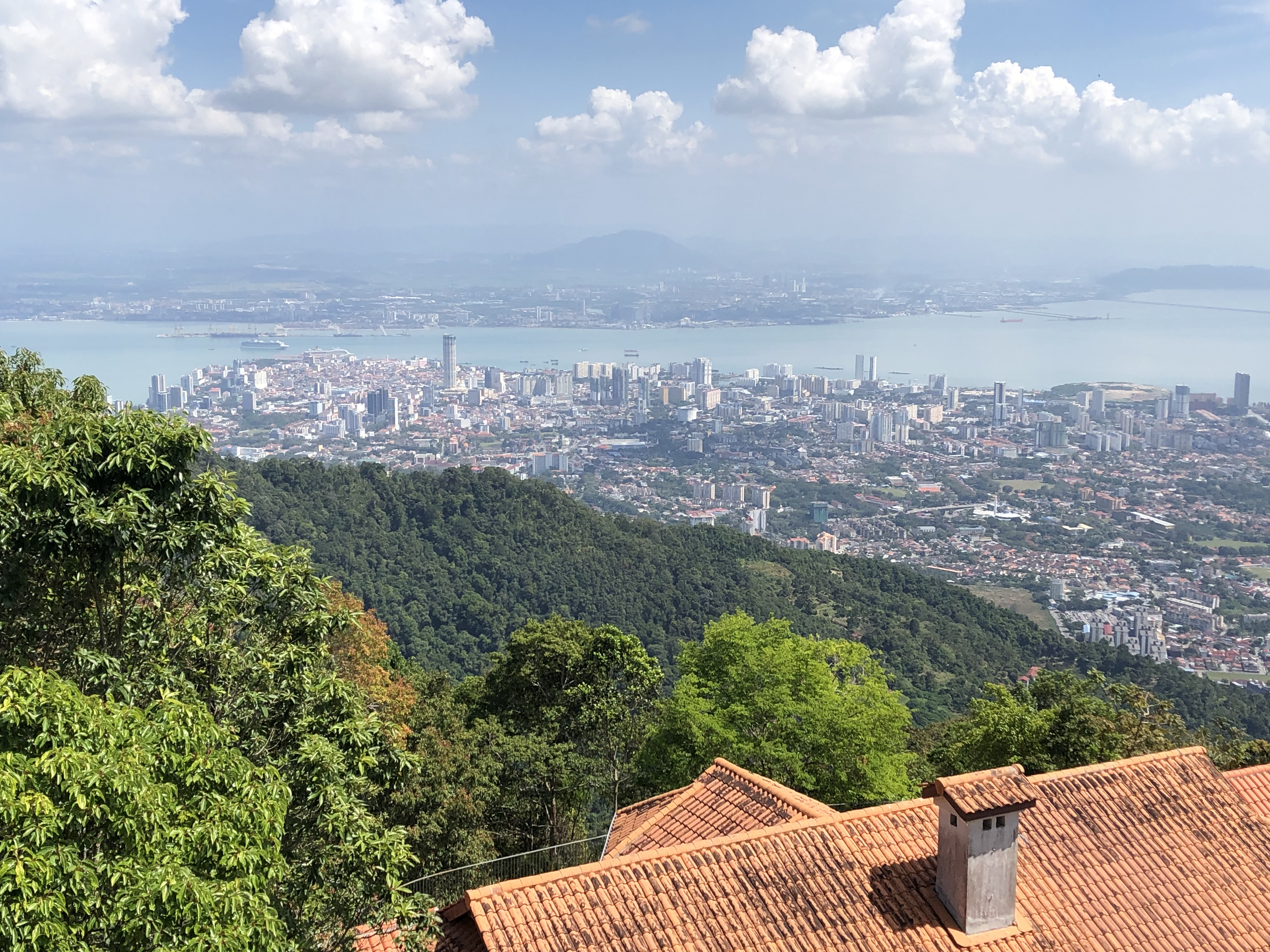
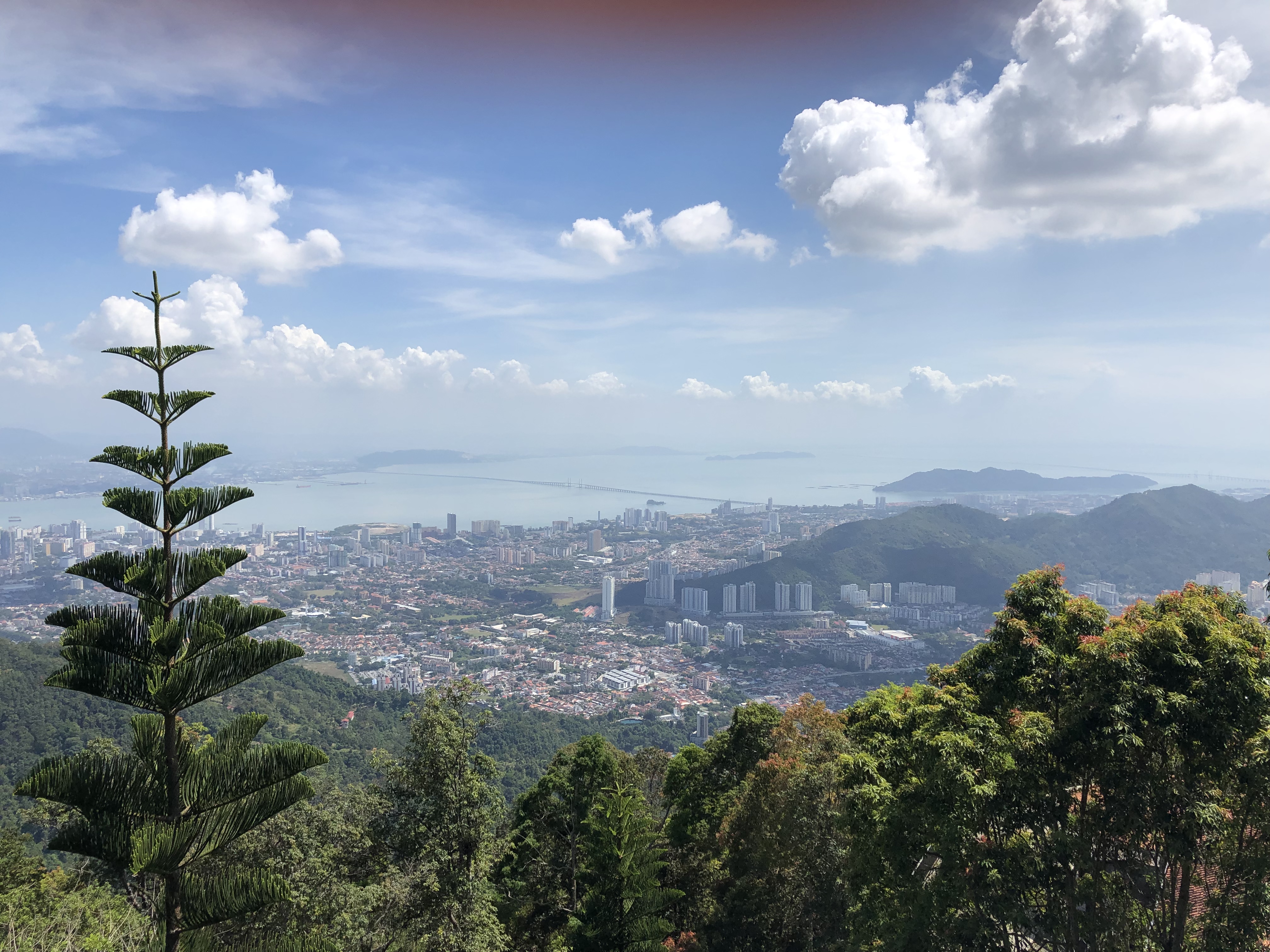
Initially we were a little disappointed with the top of the hill – there were a lot of stalls selling ‘tat’ and green-screen photographs of one’s visit. We walked up the hill to a colonial era building which showed an exhibition of photography, featuring the disastrous results of a storm in 2017 which caused scores of landslides in the area, disrupting the funicular and destroying local roads. Then, on returning to the top of the funicular, we spotted signs for something called “The Habitat”. Intrigued, we investigated further, and we are so glad that we did.
The Habitat is a modern development which has enhanced long-standing routes through the tropical rainforest, opening them to the public. Some elements are gimmicky – there is a new zip-wire, for example, for those more confident with heights than the author.
Initially, we walked, unaccompanied, surrounded by dense forest. We moved slowly, keen to spot as much as possible, but our inexperience showed. It was all stunning, but we weren’t really spotting the wildlife. Soon, though, we arrived at an area of wild orchids, with local guides awaiting to show us around. Here the benefits of local knowledge showed immediately, as the guide showed us beautiful but tiny wild orchids, Golden Orb Weaver spiders, a well-hidden tarantula nest and a gecko, all but hidden against a rock face.
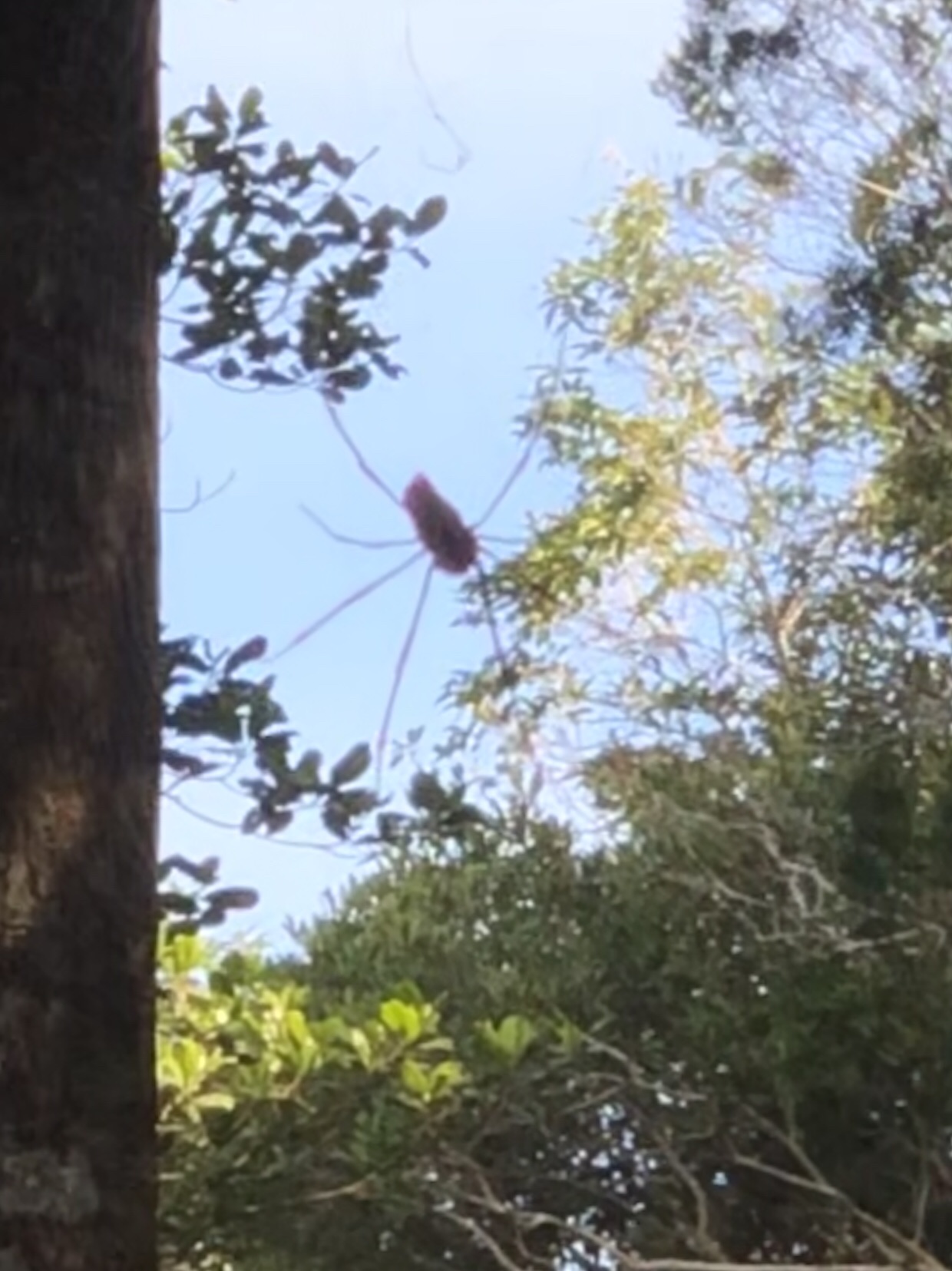
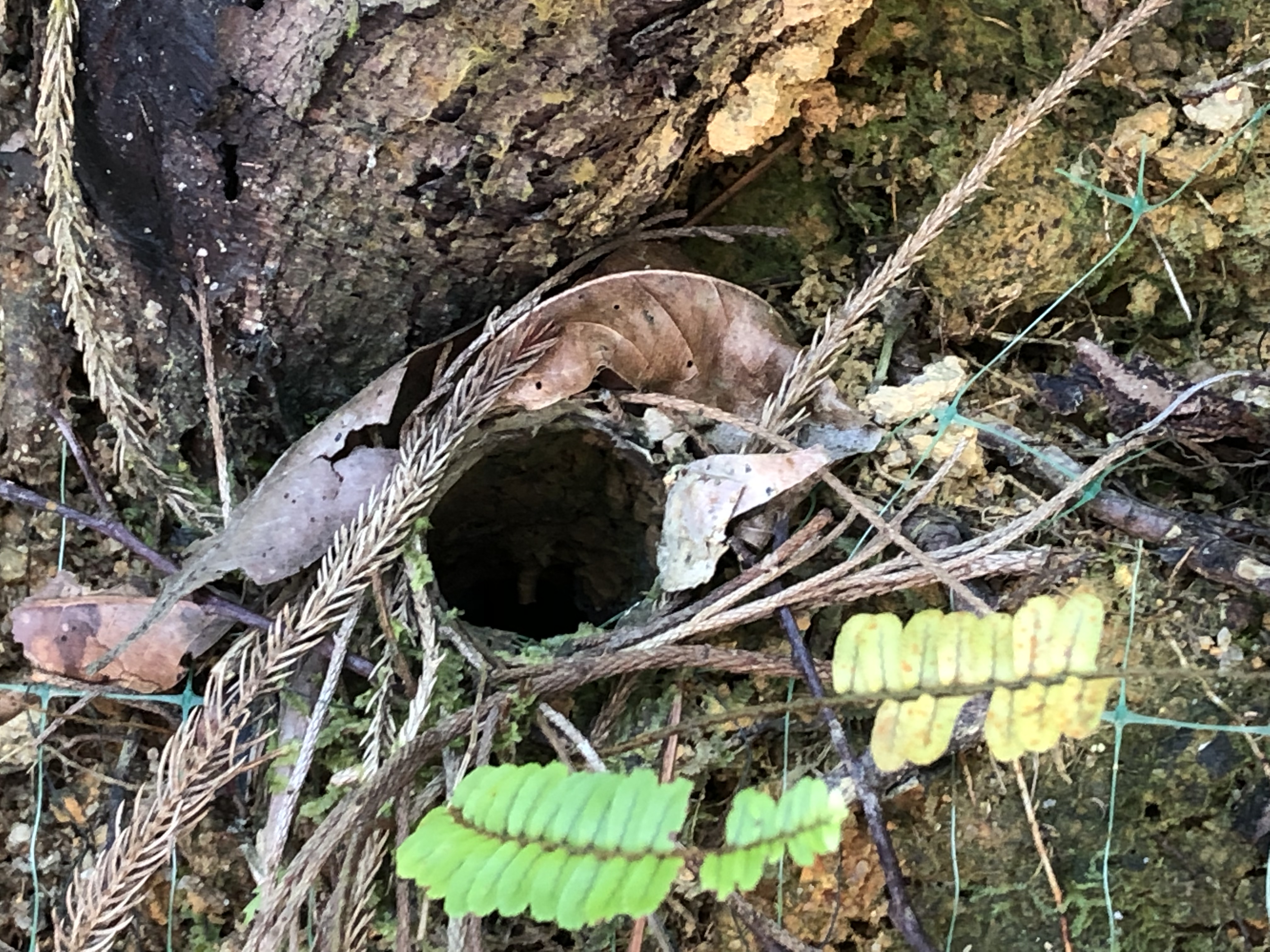
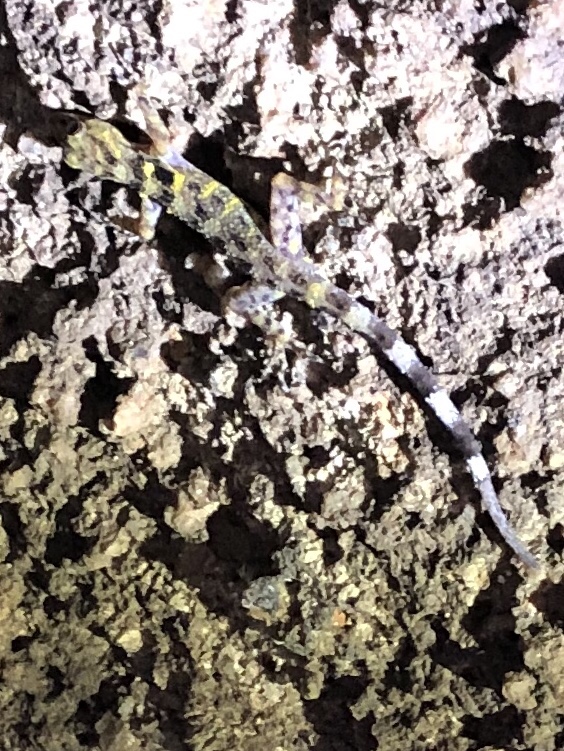
This was just the start, as a few hundred yards further on another guide took us on a longer walk, pointing out squirrels, gorgeous blue birds and a wide range of local flora. We didn’t spot any monkeys, sadly – apparently the previous day some macaques had blocked the bridge, refusing to let any visitors past. We missed out too, on some of the snakes which occupy the area. The guide was excellent, though, and led us eventually to a high-level canopy walk above the trees, with views of colonial era bungalows and sea views to both sides of Penang Island. It was brilliant.
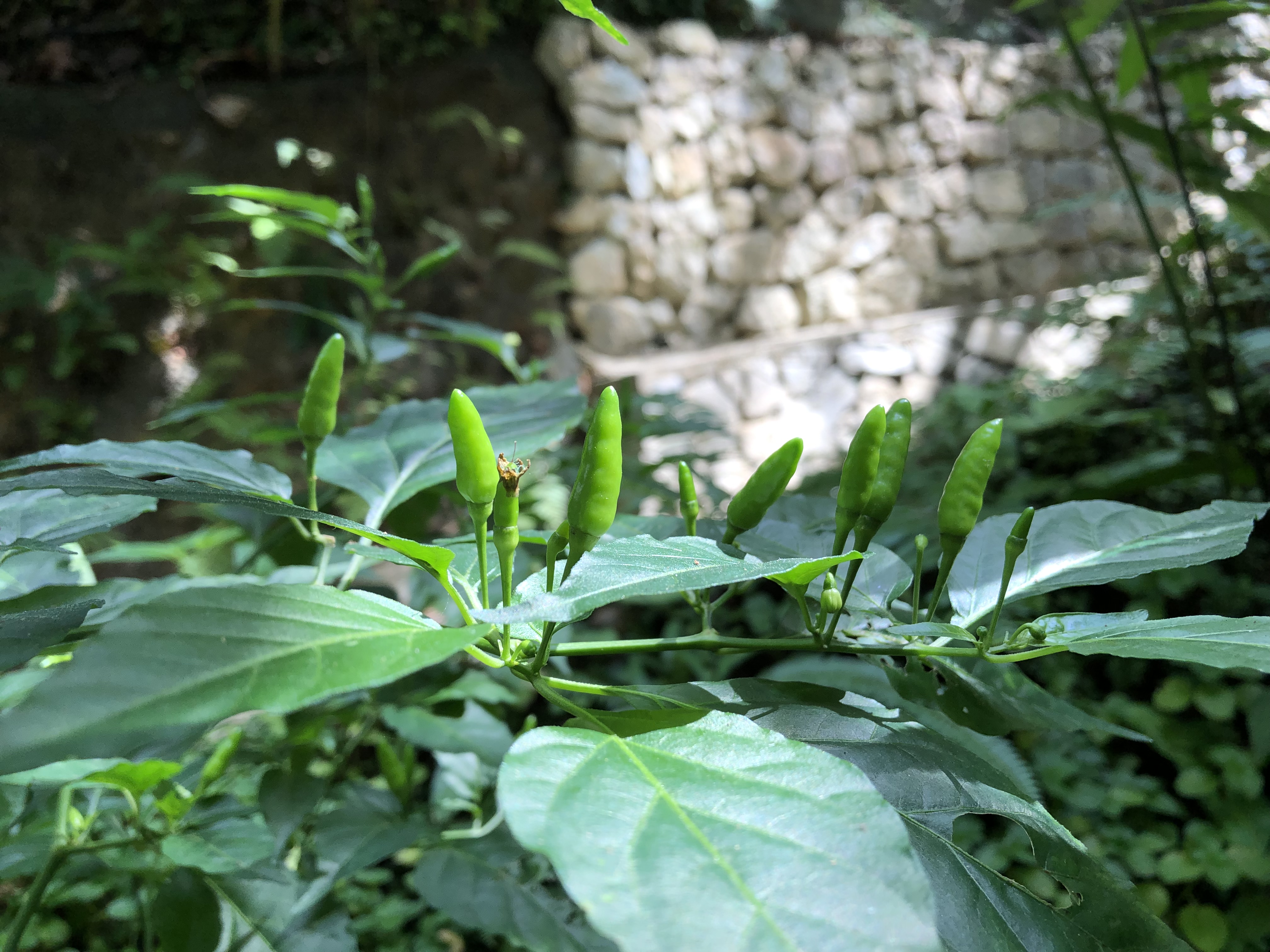
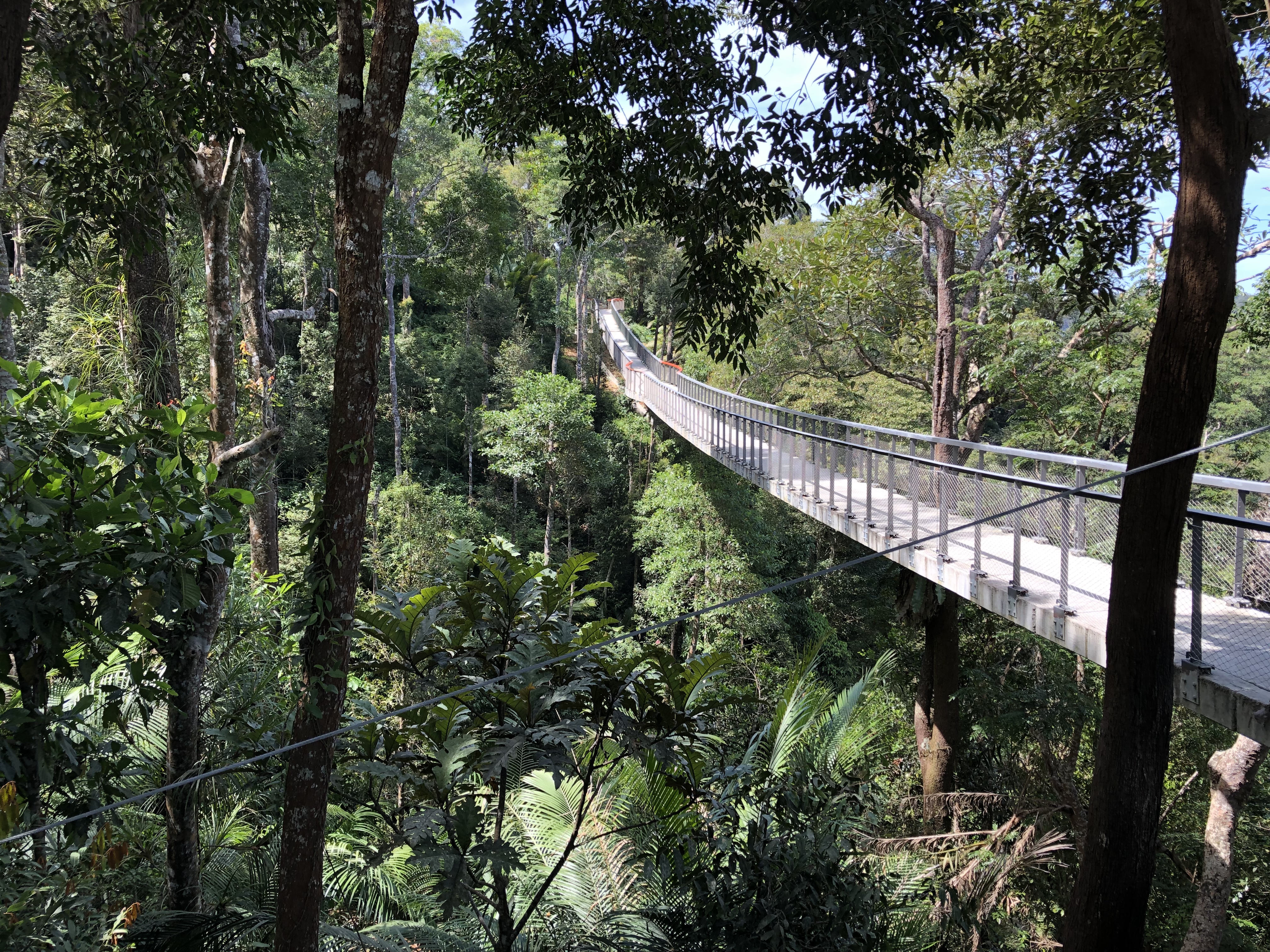
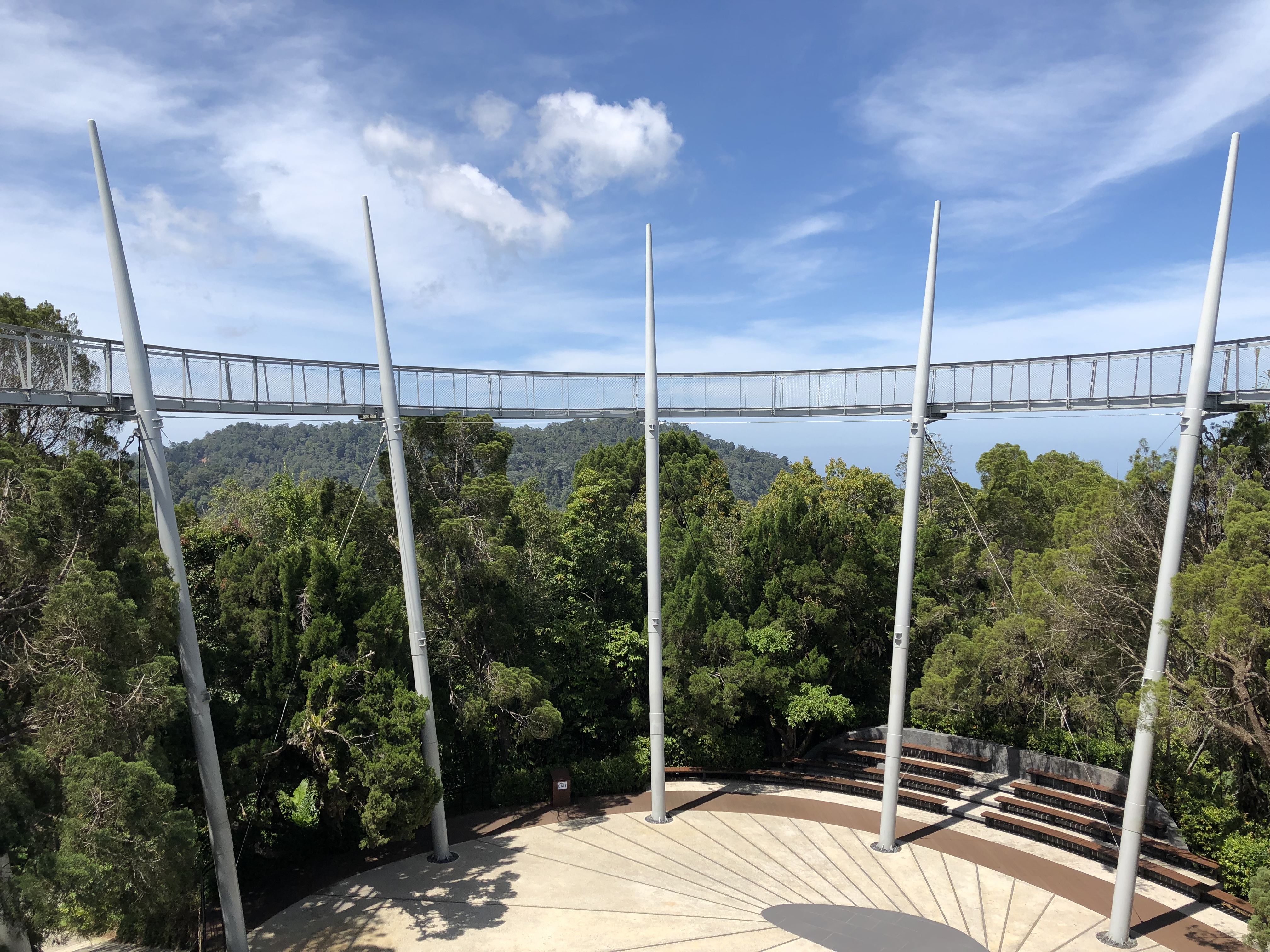
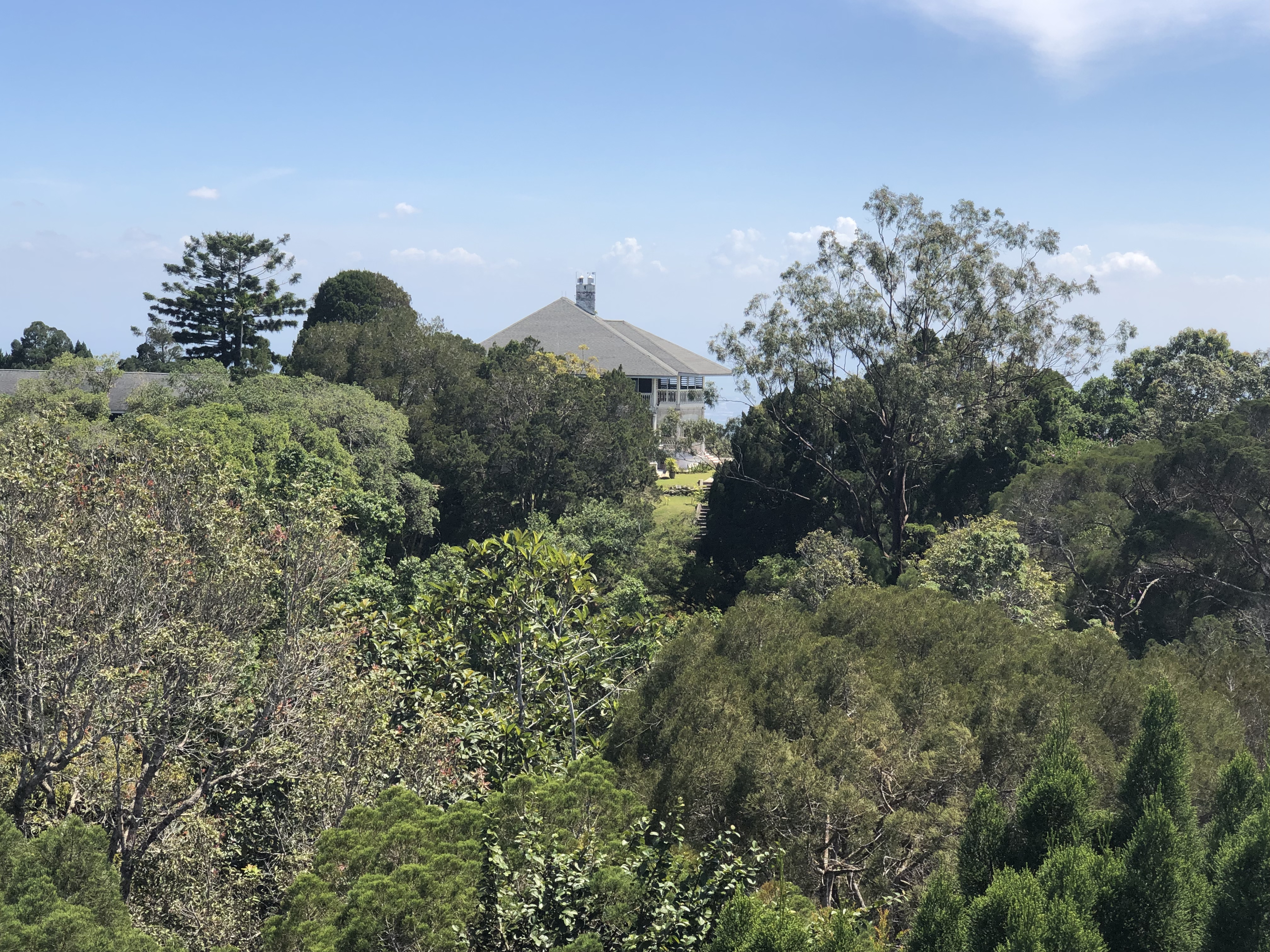
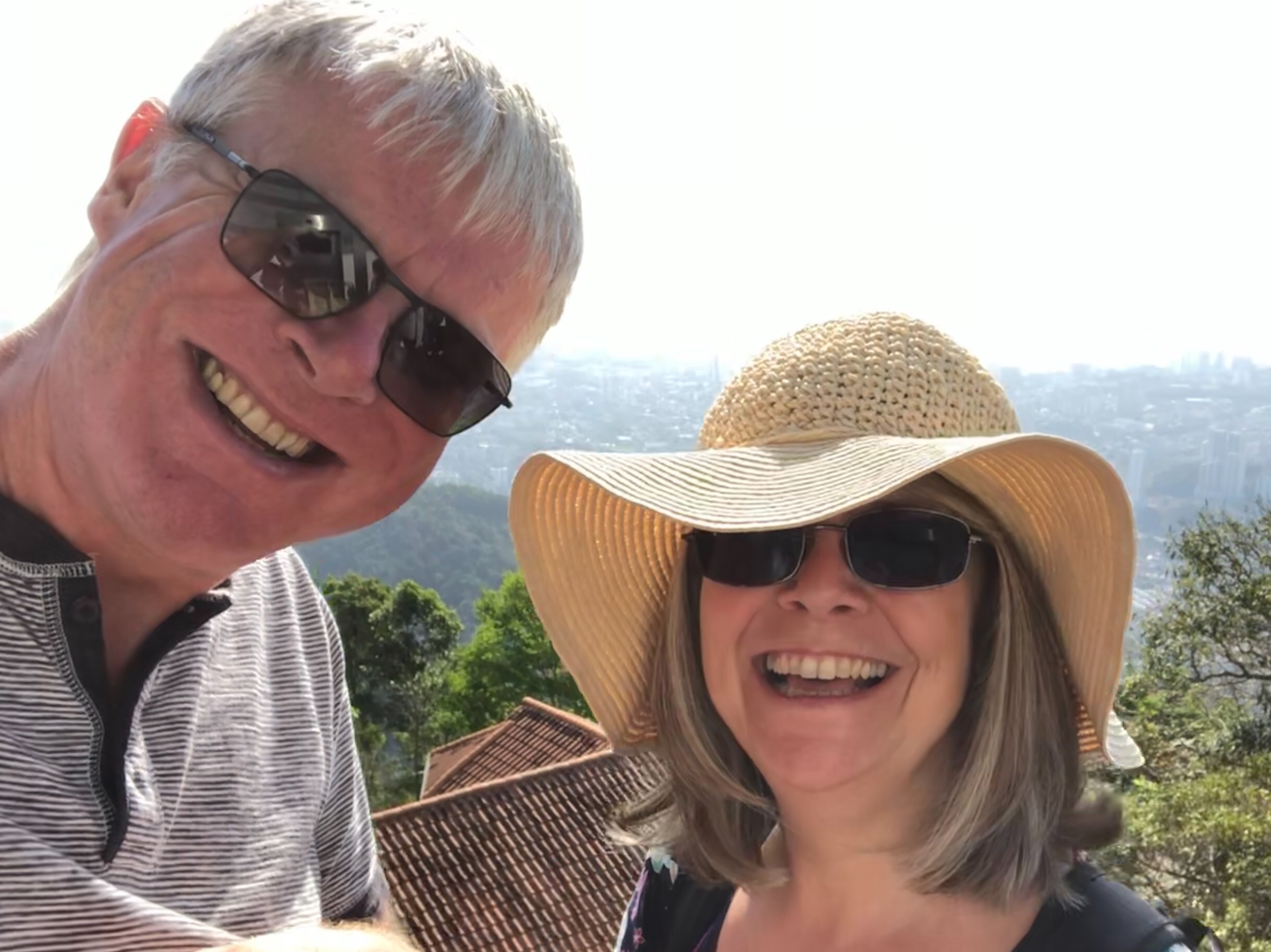
Before departure on our final day we visited the Clan Jetties. These are small villages built on stilts above the water, each jetty home to a different Chinese clan. Some of the jetties have been commercialised, some remain residential, the latter being more picturesque. At the end of one jetty we came across a striking Buddhist temple complex called Hean Boo Thean Kuan Yin, which also gave fine views over the nearby jetties.
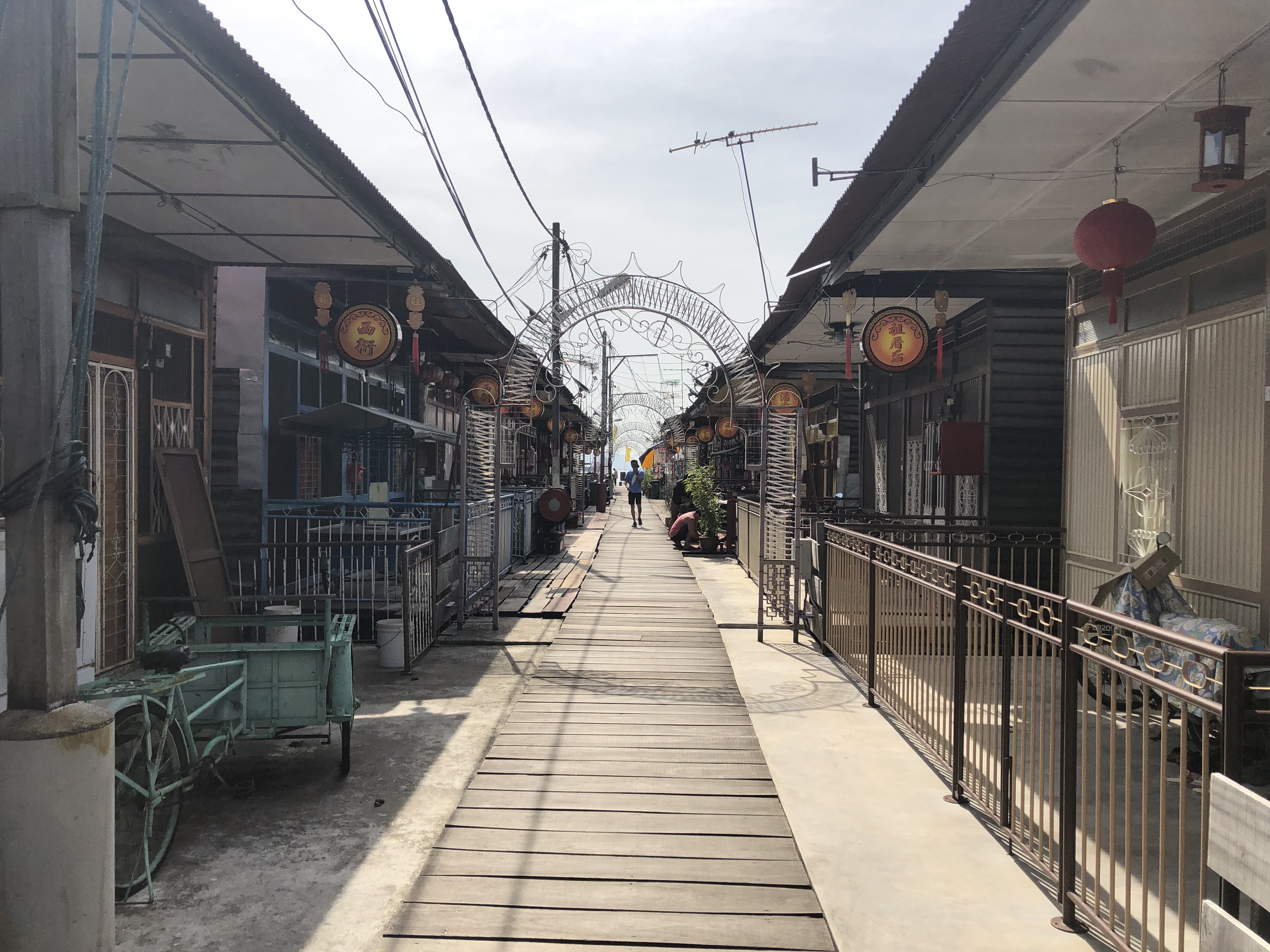
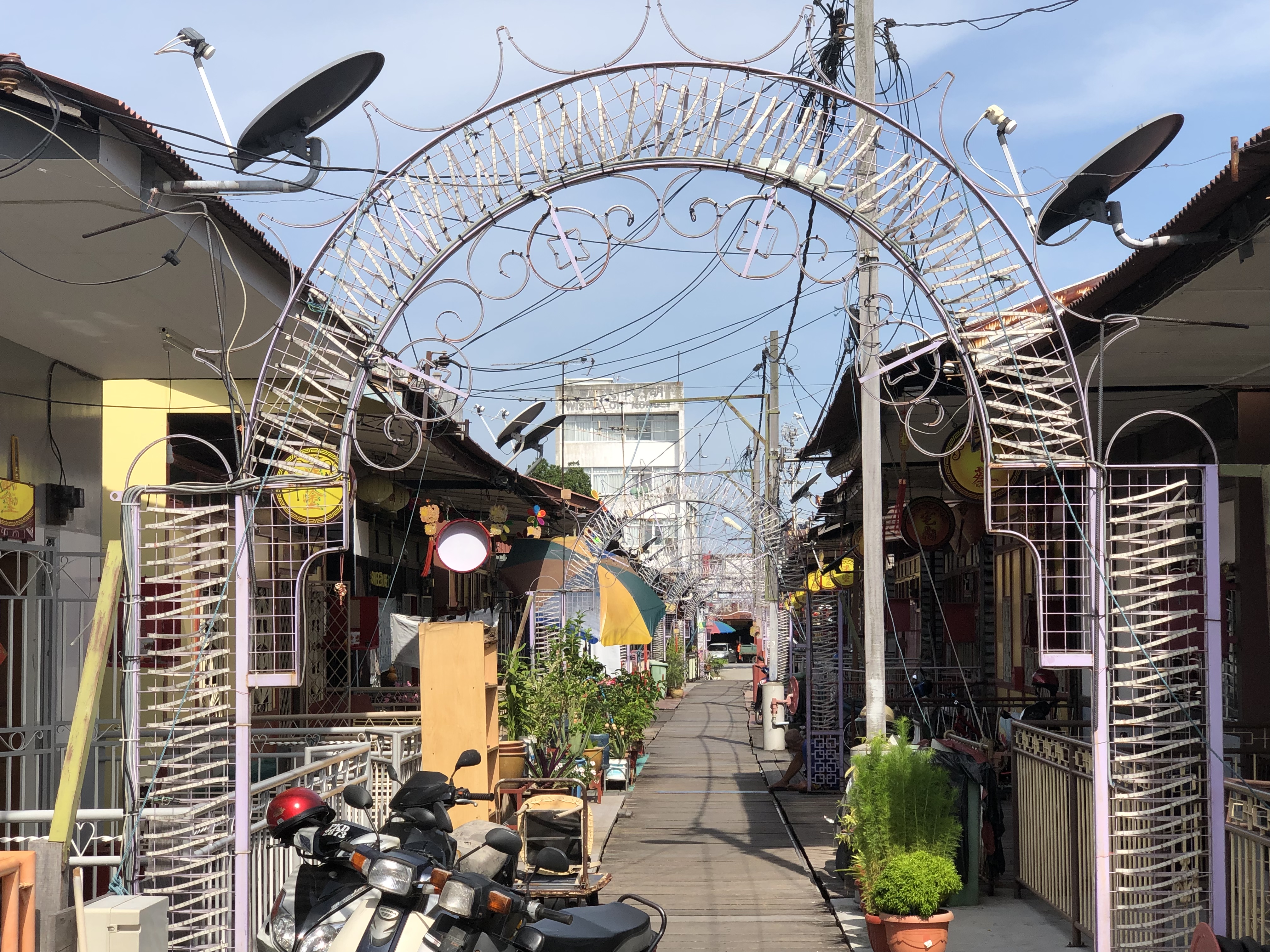
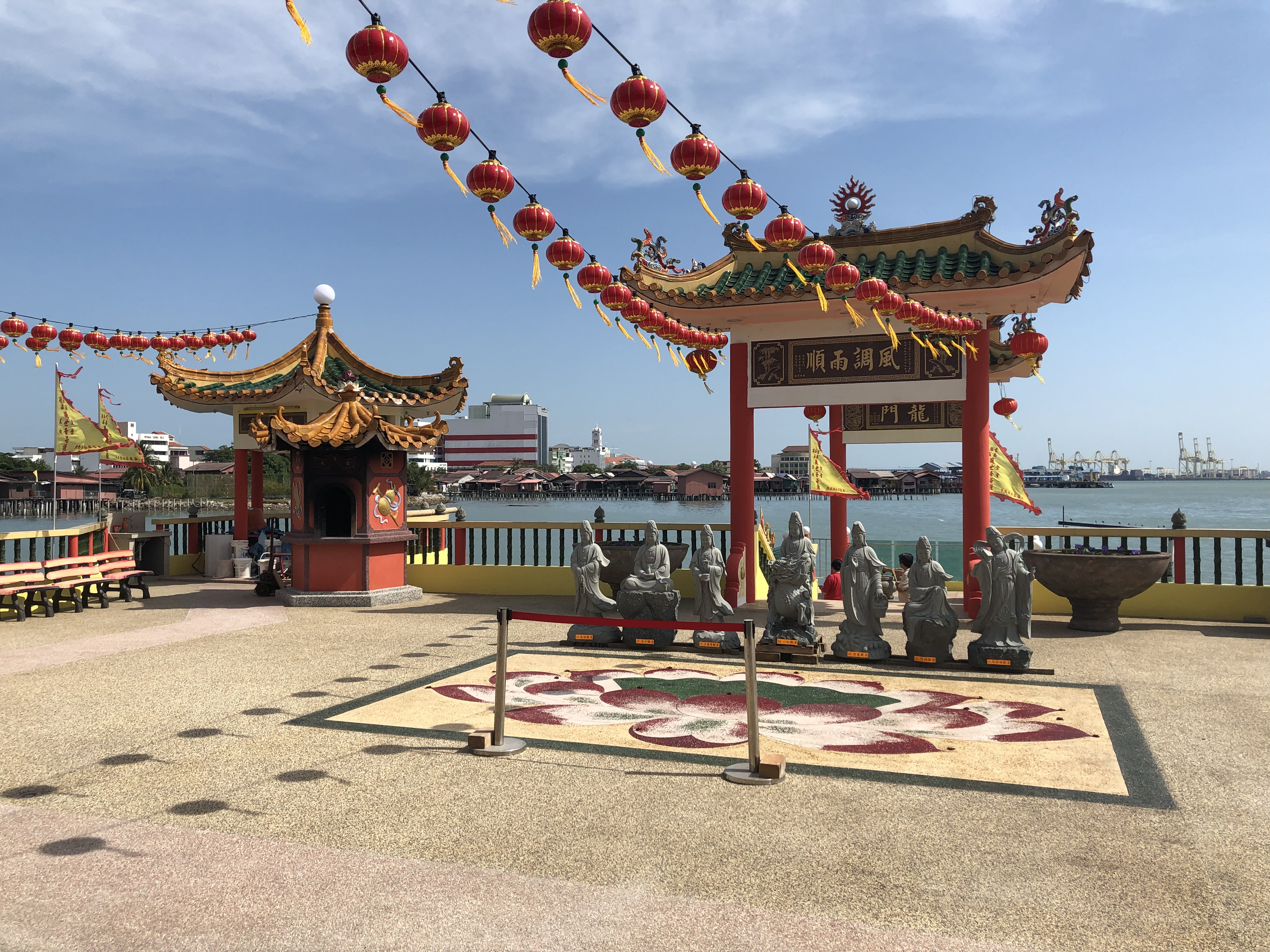
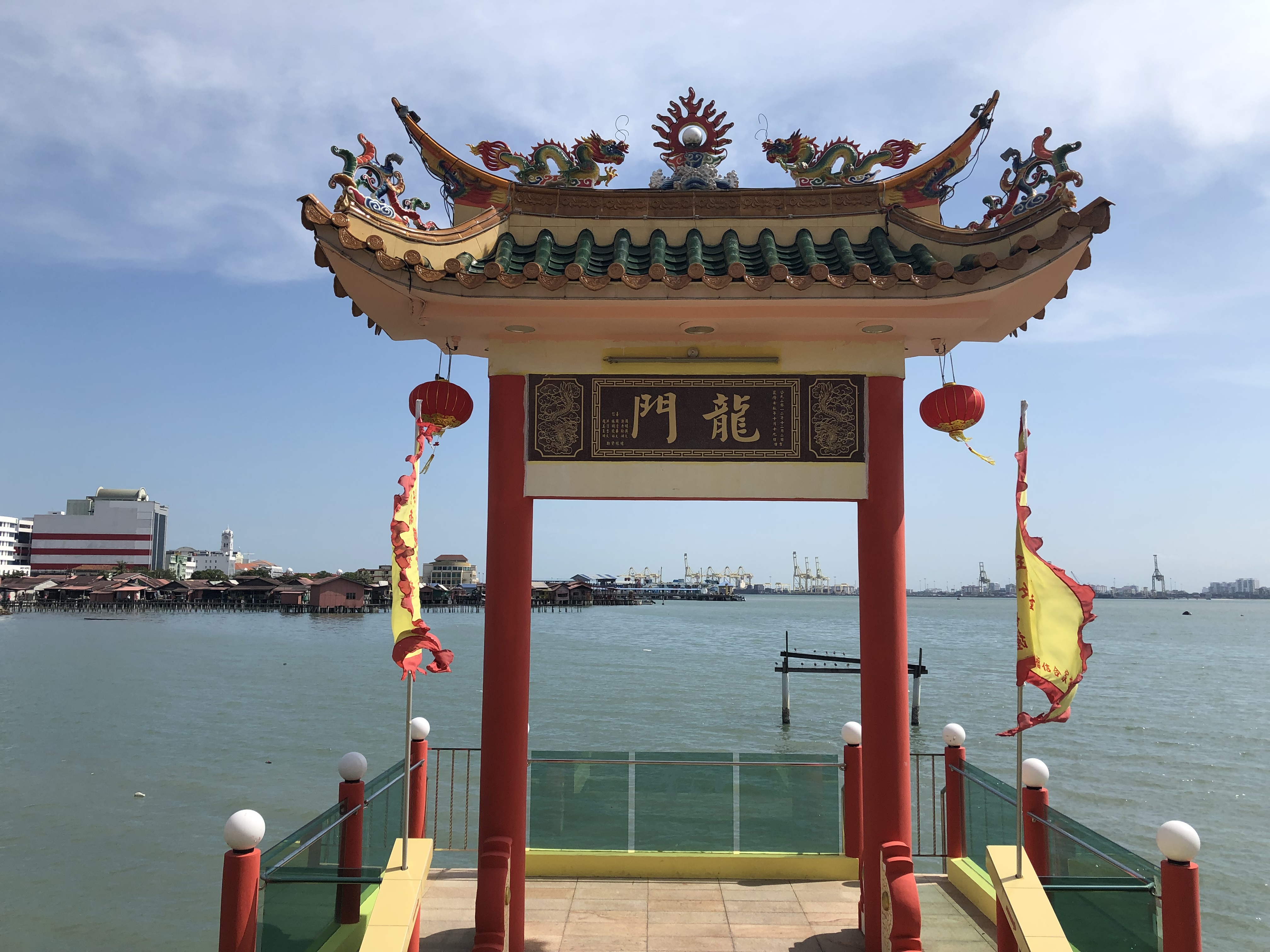
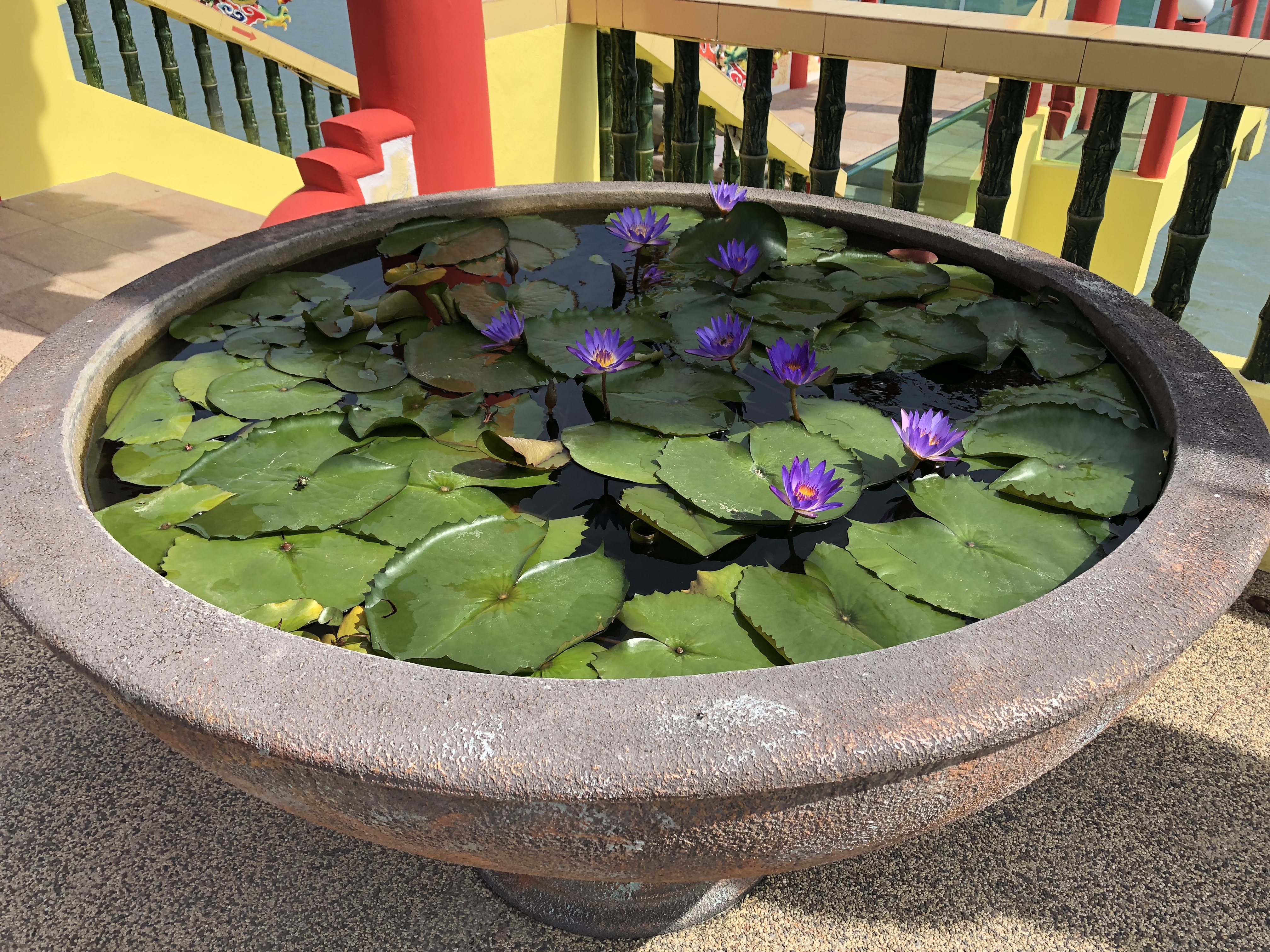
Finally we headed for Khoo Kongsi, one of the grandest clan houses in Penang. This stunning clan house is at the centre of a courtyard surrounded by rows of houses converted into hotel accommodation. The clan house itself features tall thin columns supporting a gently sloping, red tiled roof, topped with carvings of dragons, phoenixes and other mythical animals. The building is protected by stone guardian lions, carved from granite, with a round granite “pearl” inside their mouths, carved so that it can roll around inside the lion’s mouth but not be removed.
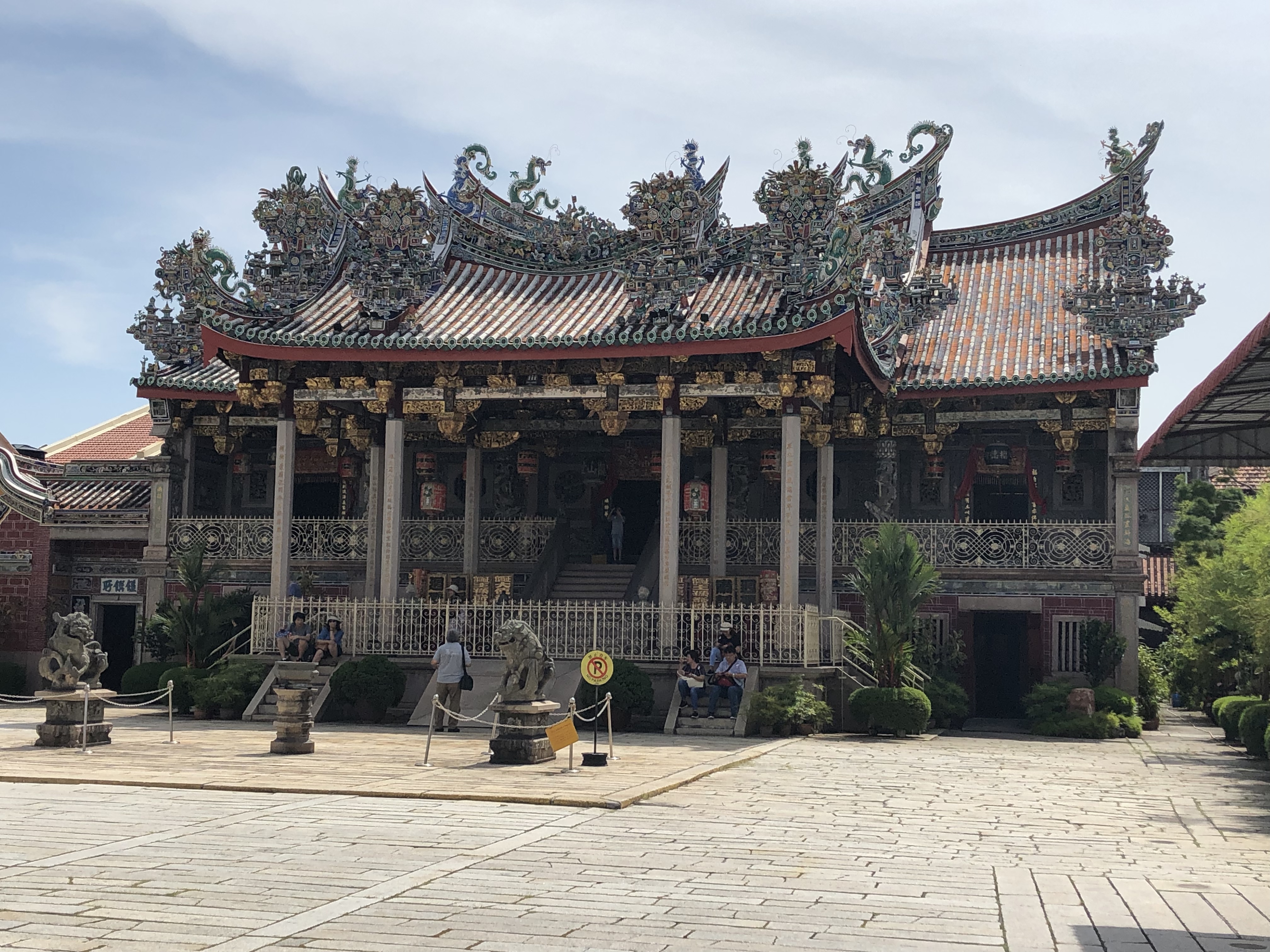
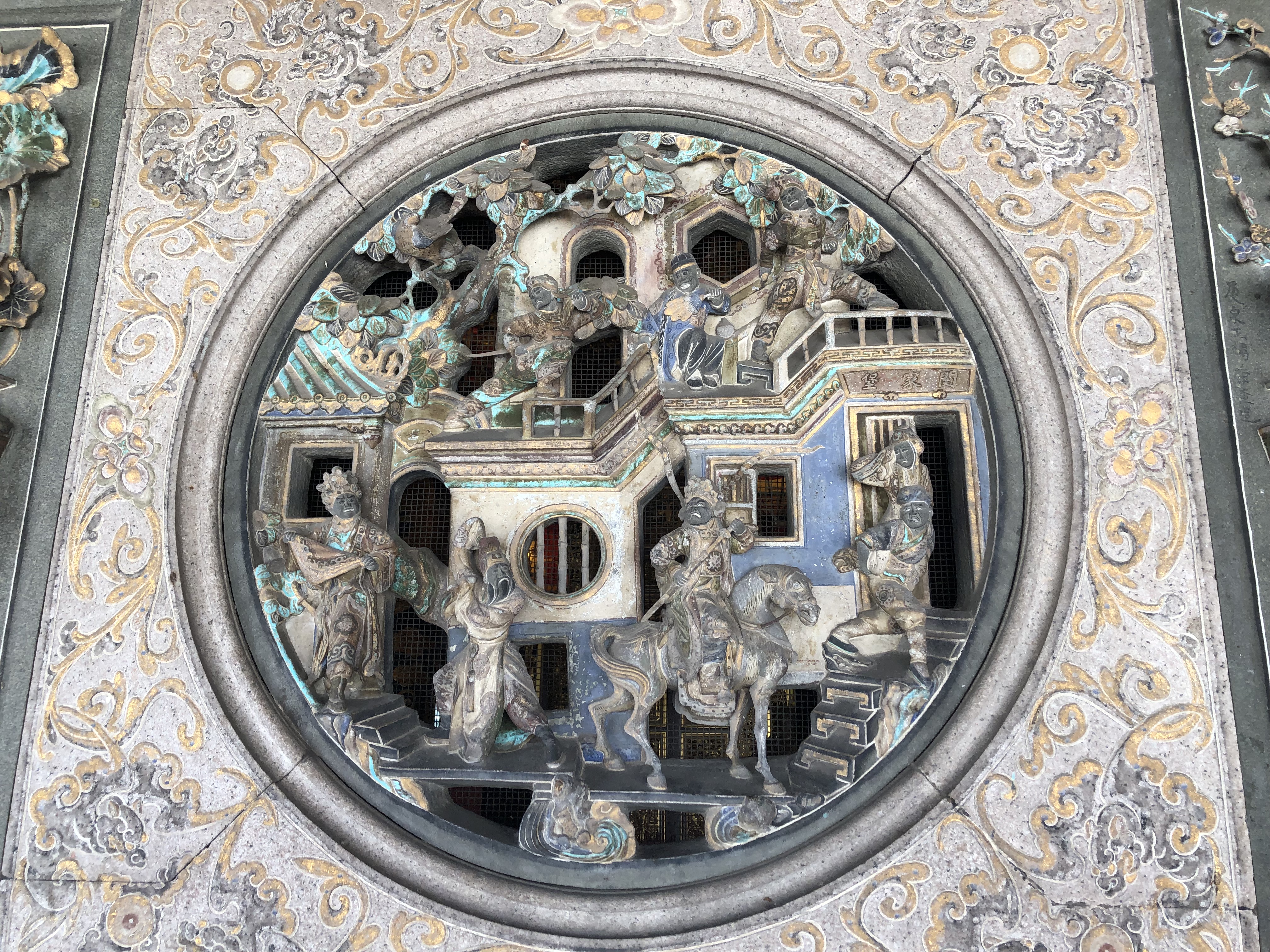
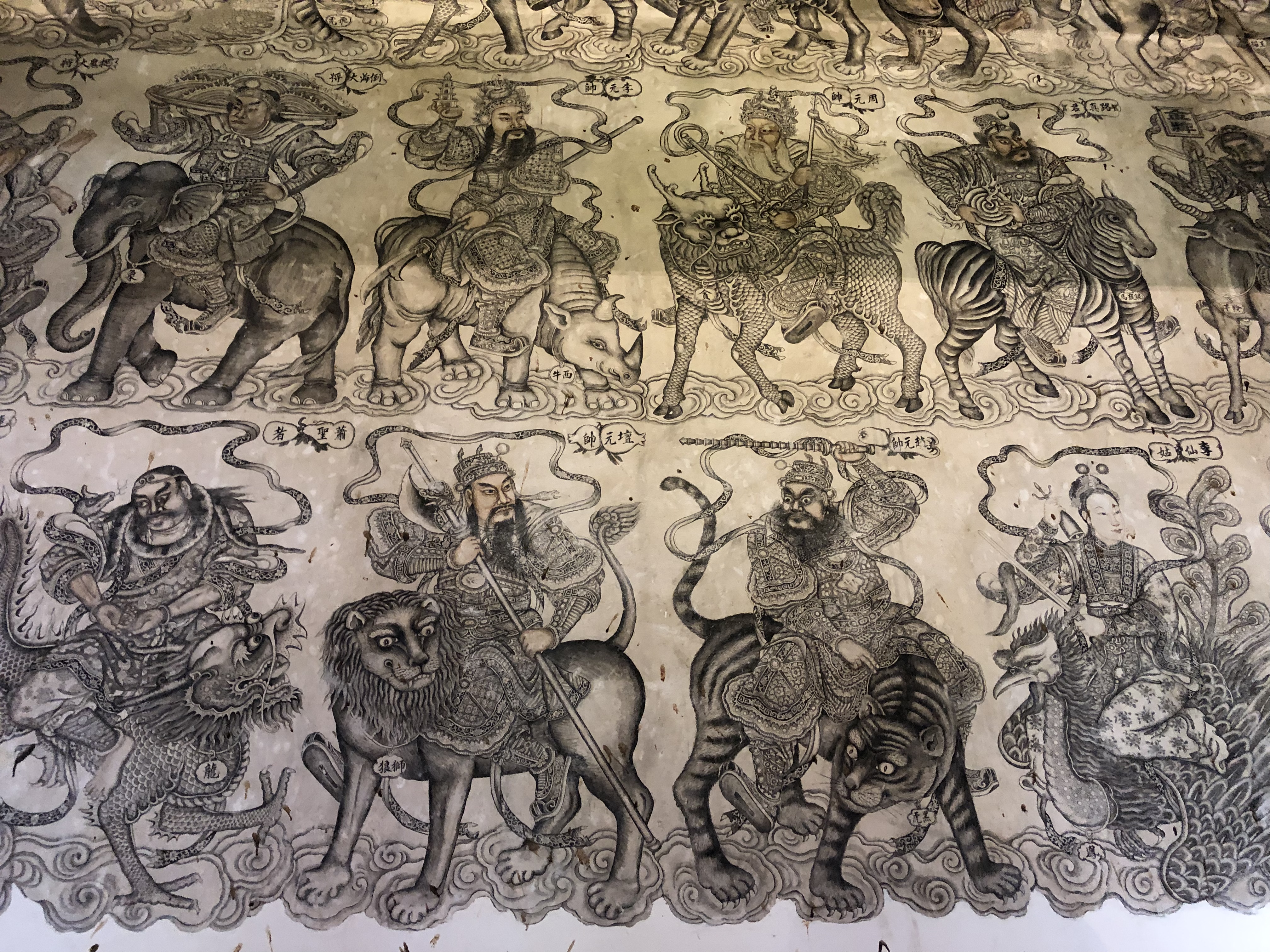
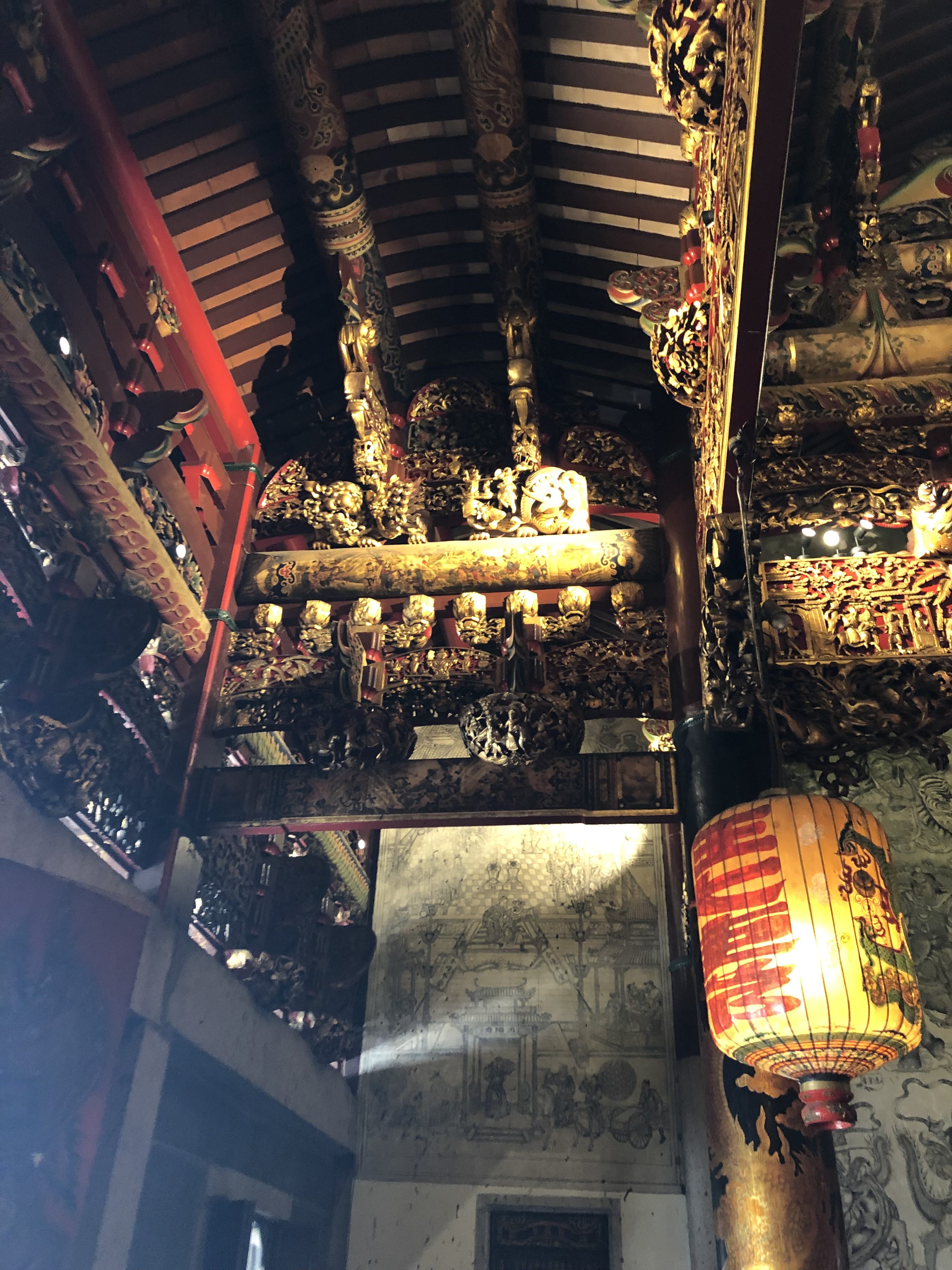
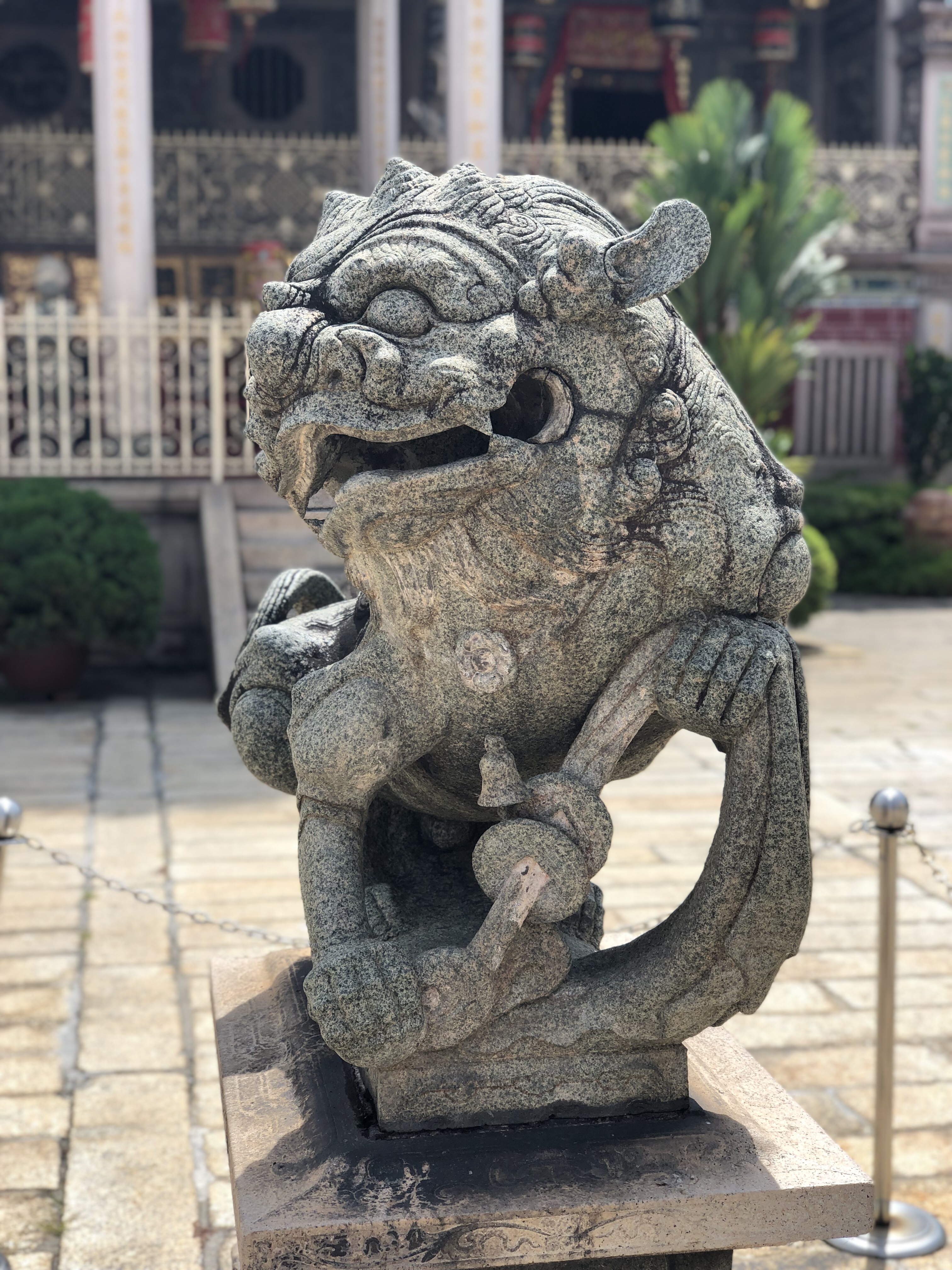
Inside the clan building there were long lists of the accomplishments of clan members, many of whom seem to have become lawyers and doctors, and attended fine academic institutions in Britain, including our own universities of Bath and Liverpool.
A final lunch, then, in China House Café, a long thin building serving fine tea and coffee and an amazing array of cakes, before we returned to the hotel to pack and head for the airport.
I write this in Penang airport – shortly we will fly to Kuala Lumpur, a journey of just over an hour, and then we will continue on the overnight flight to Sydney.
